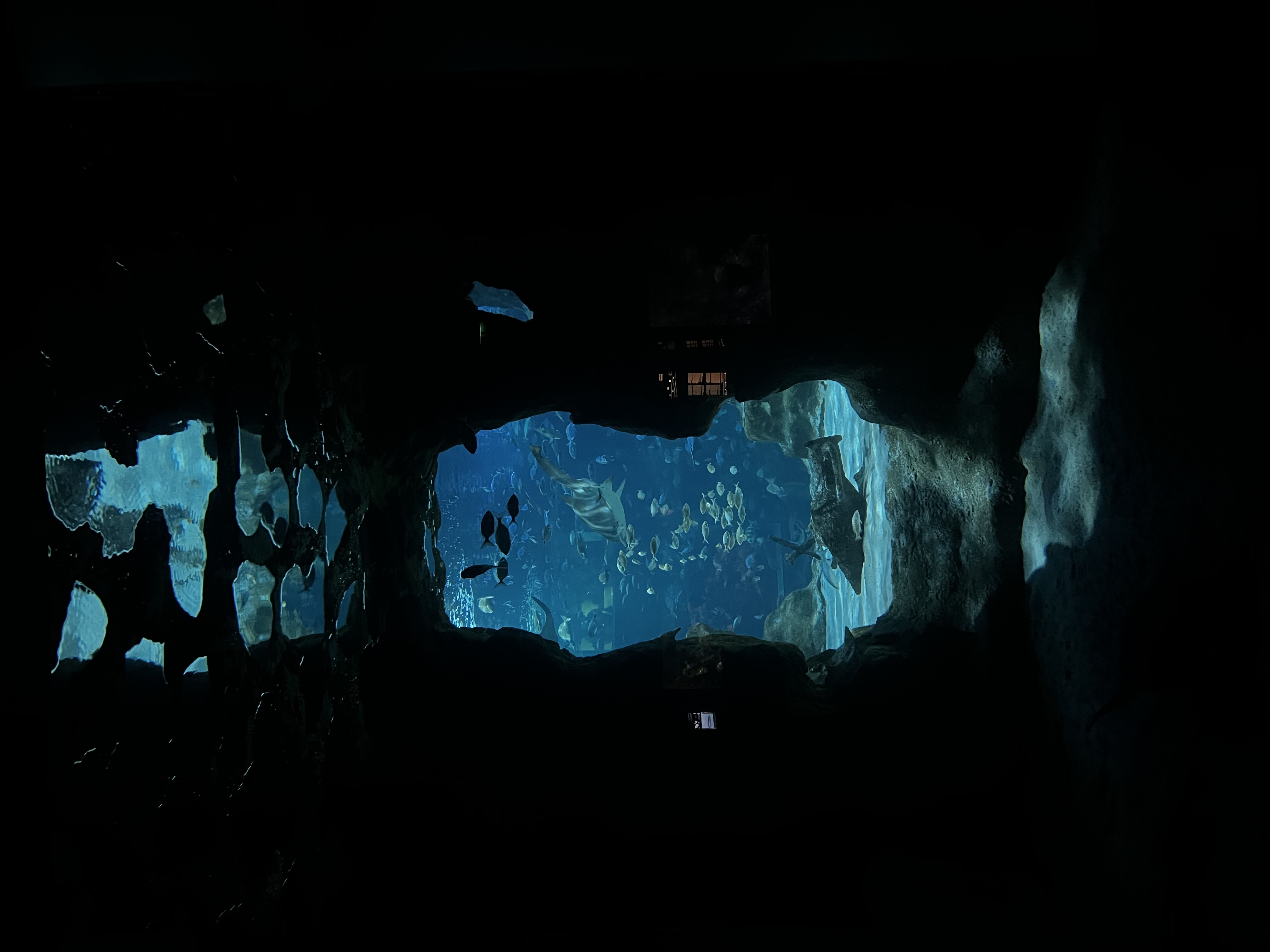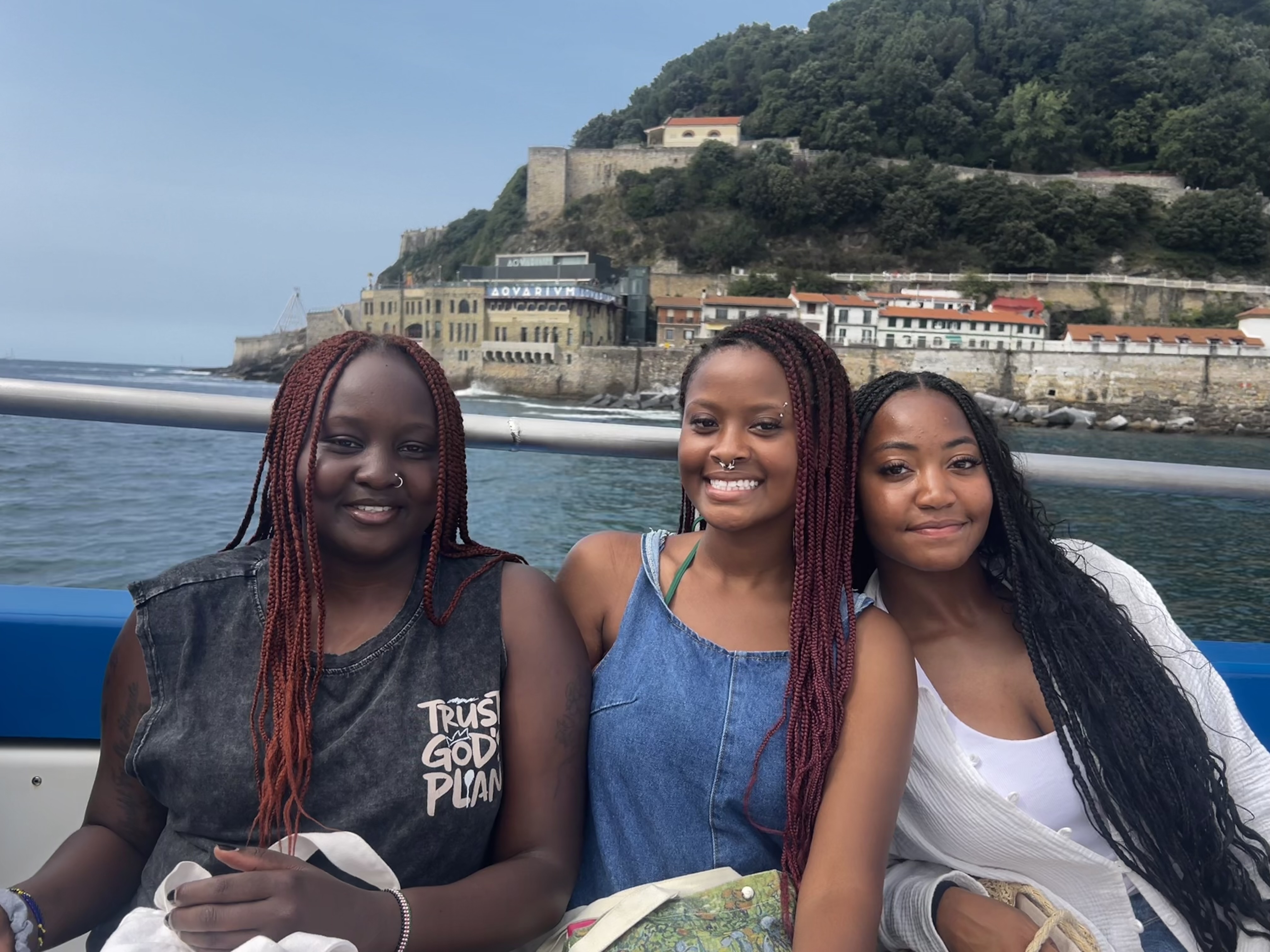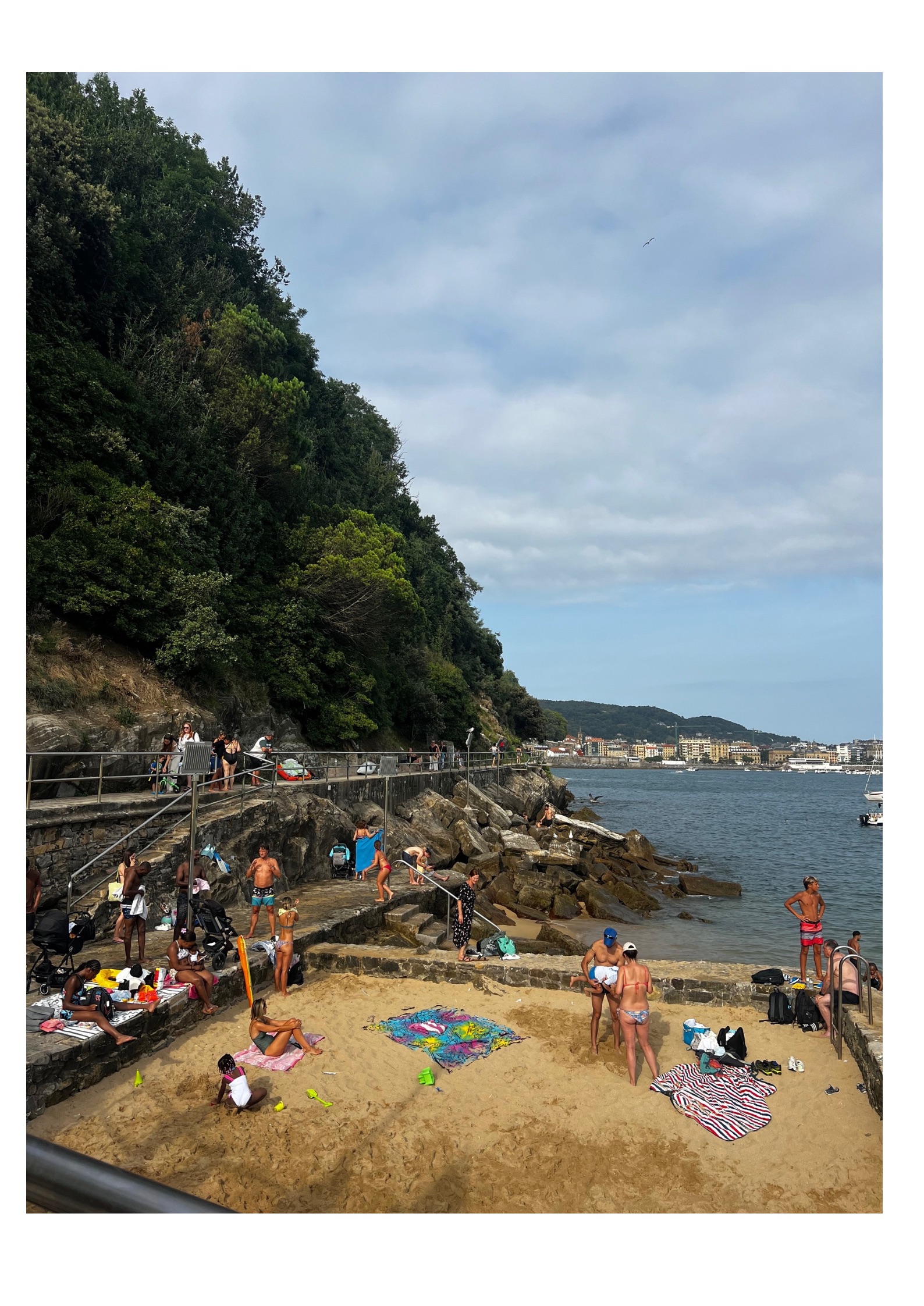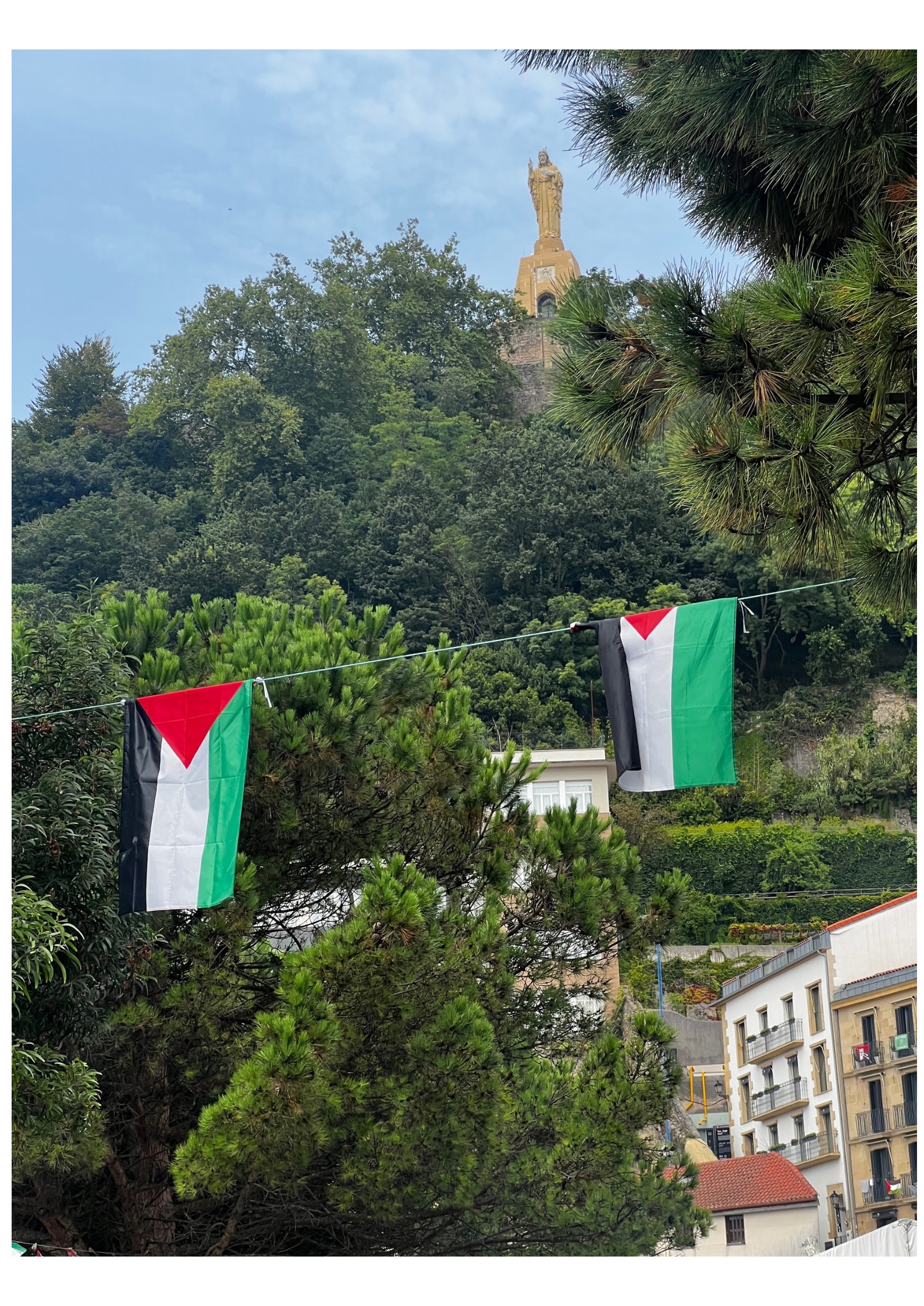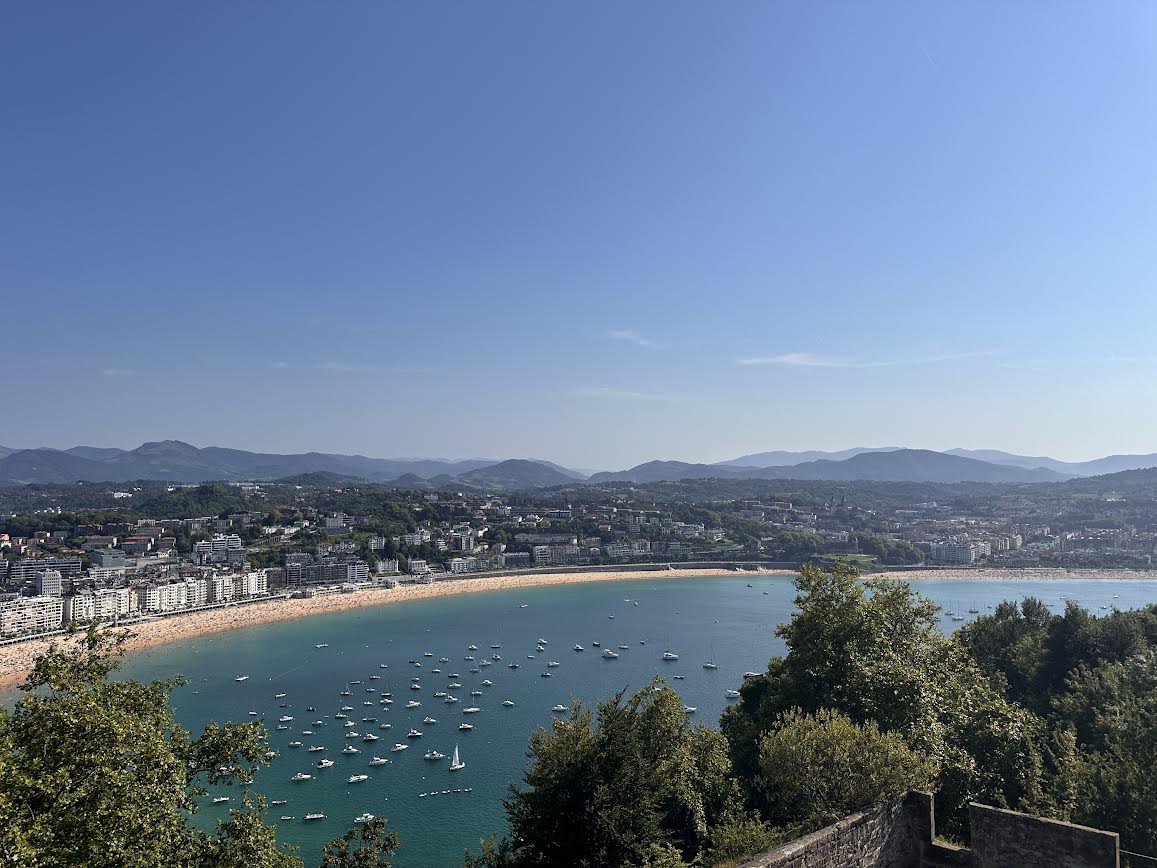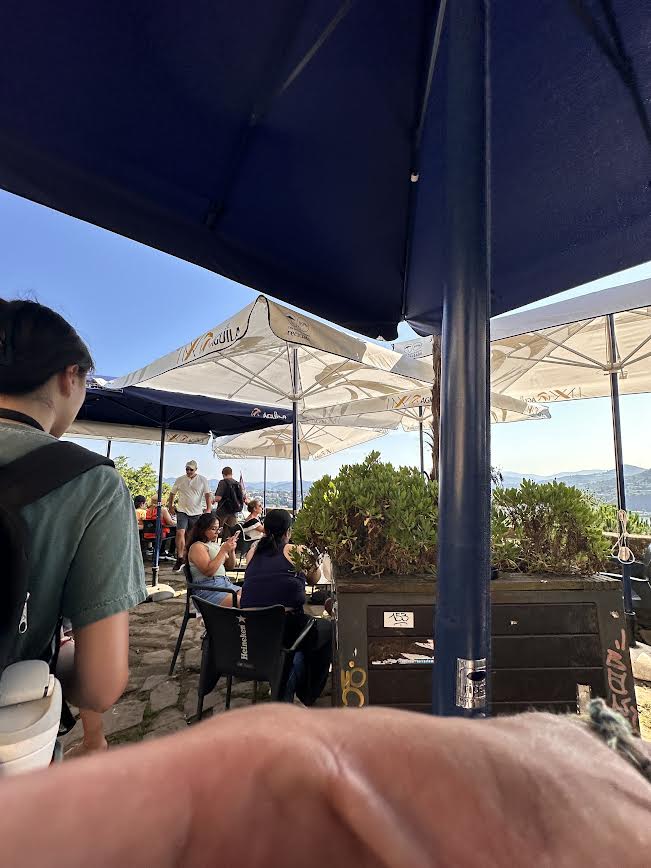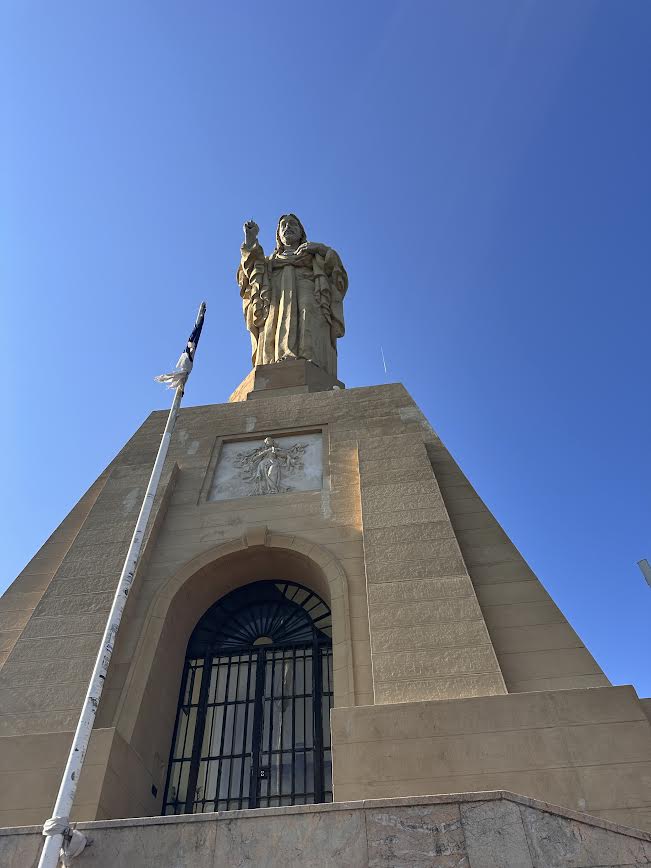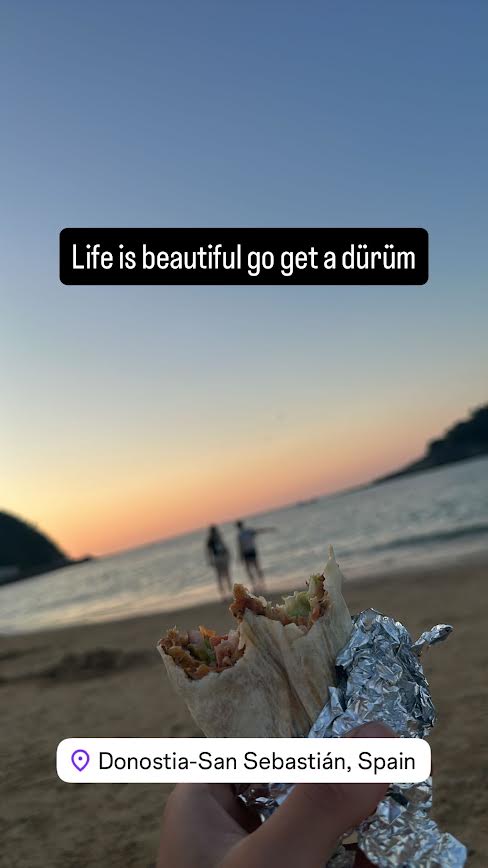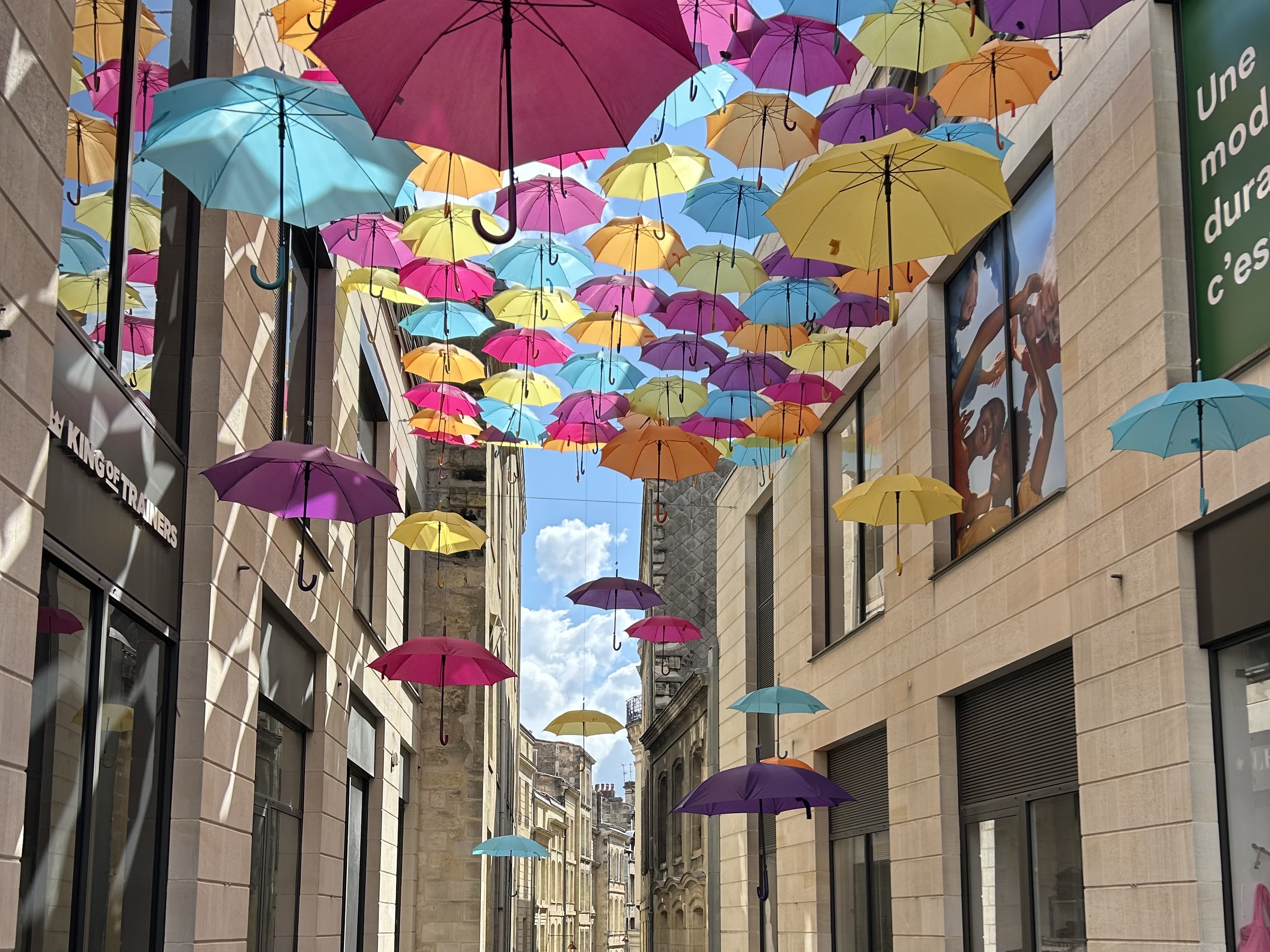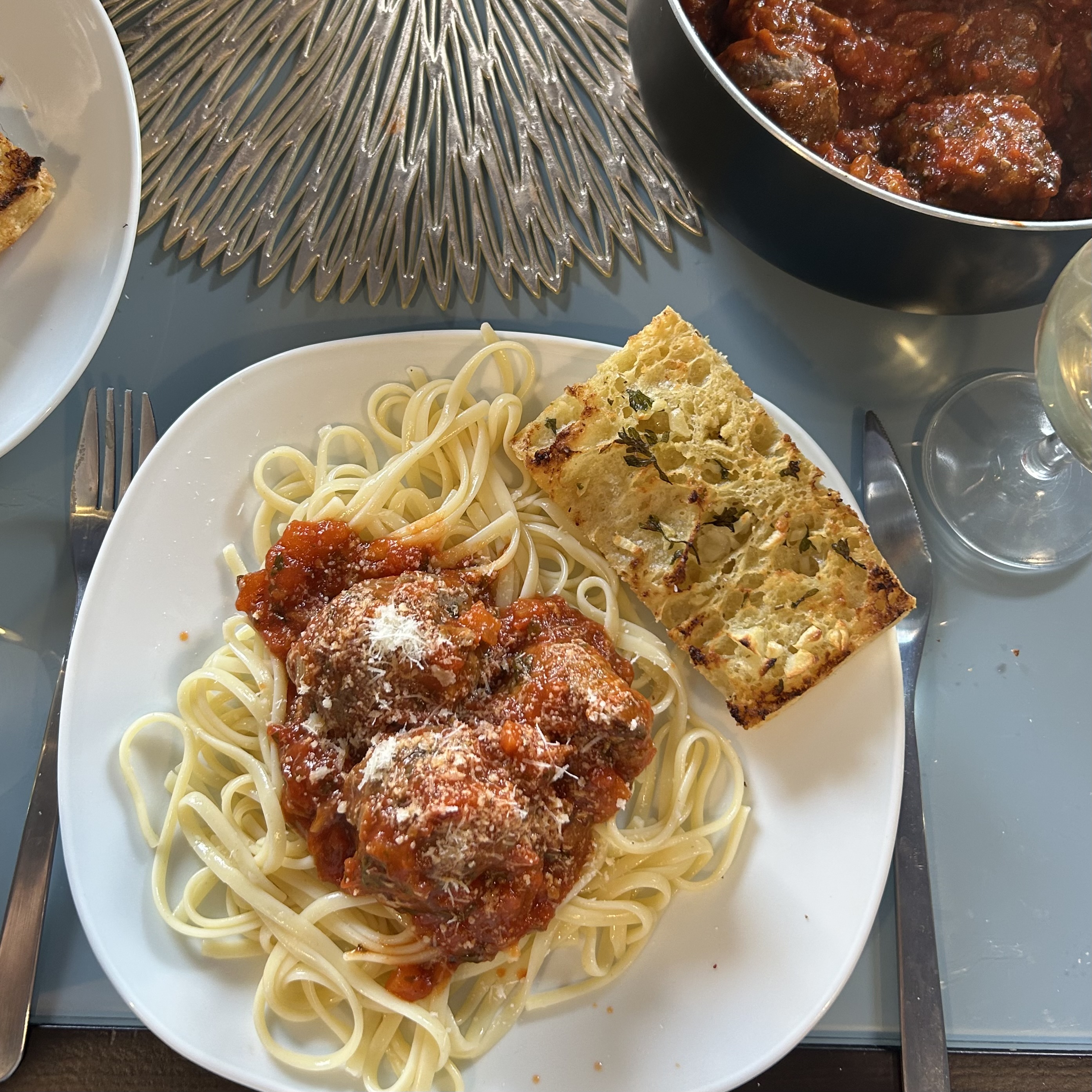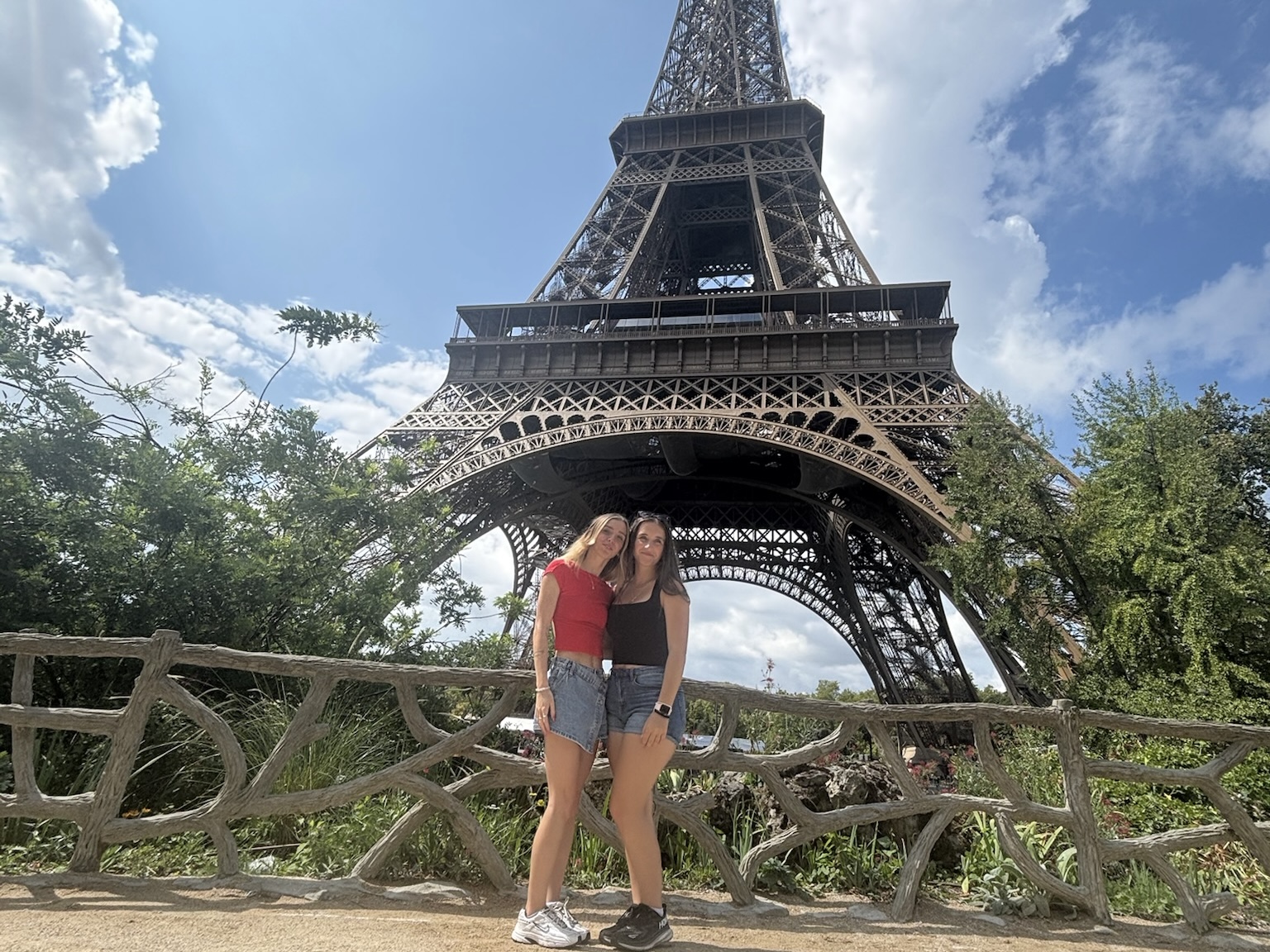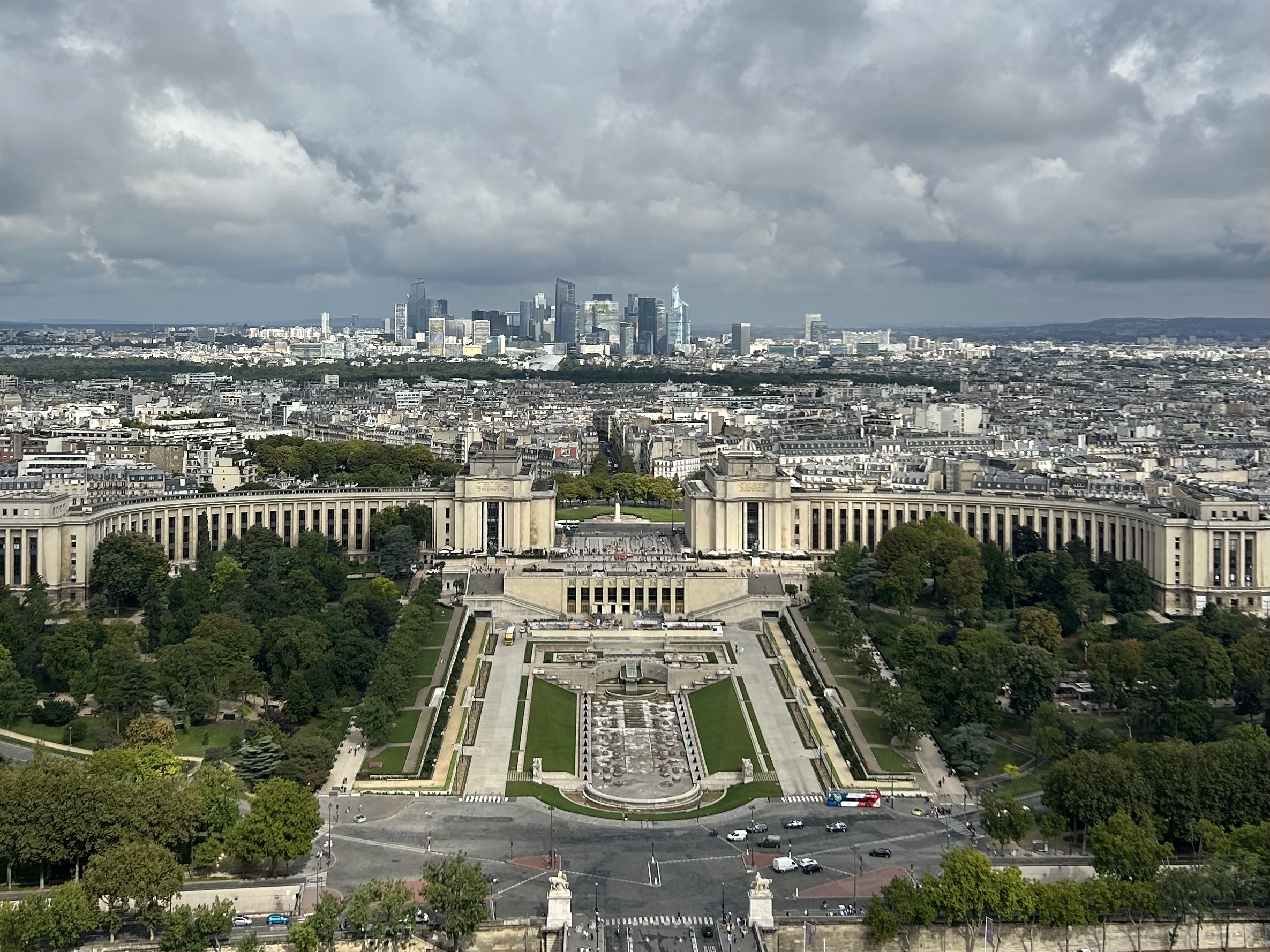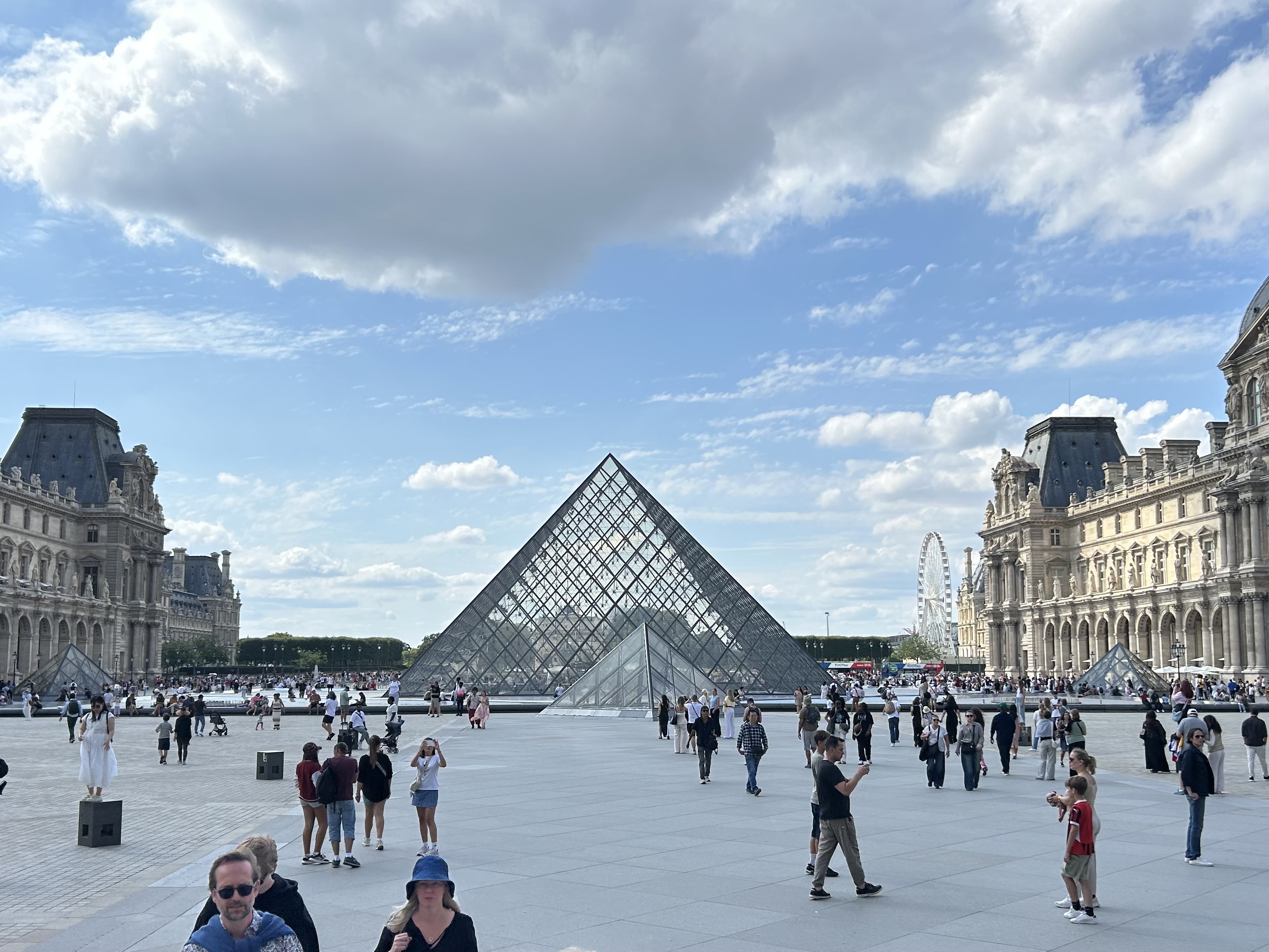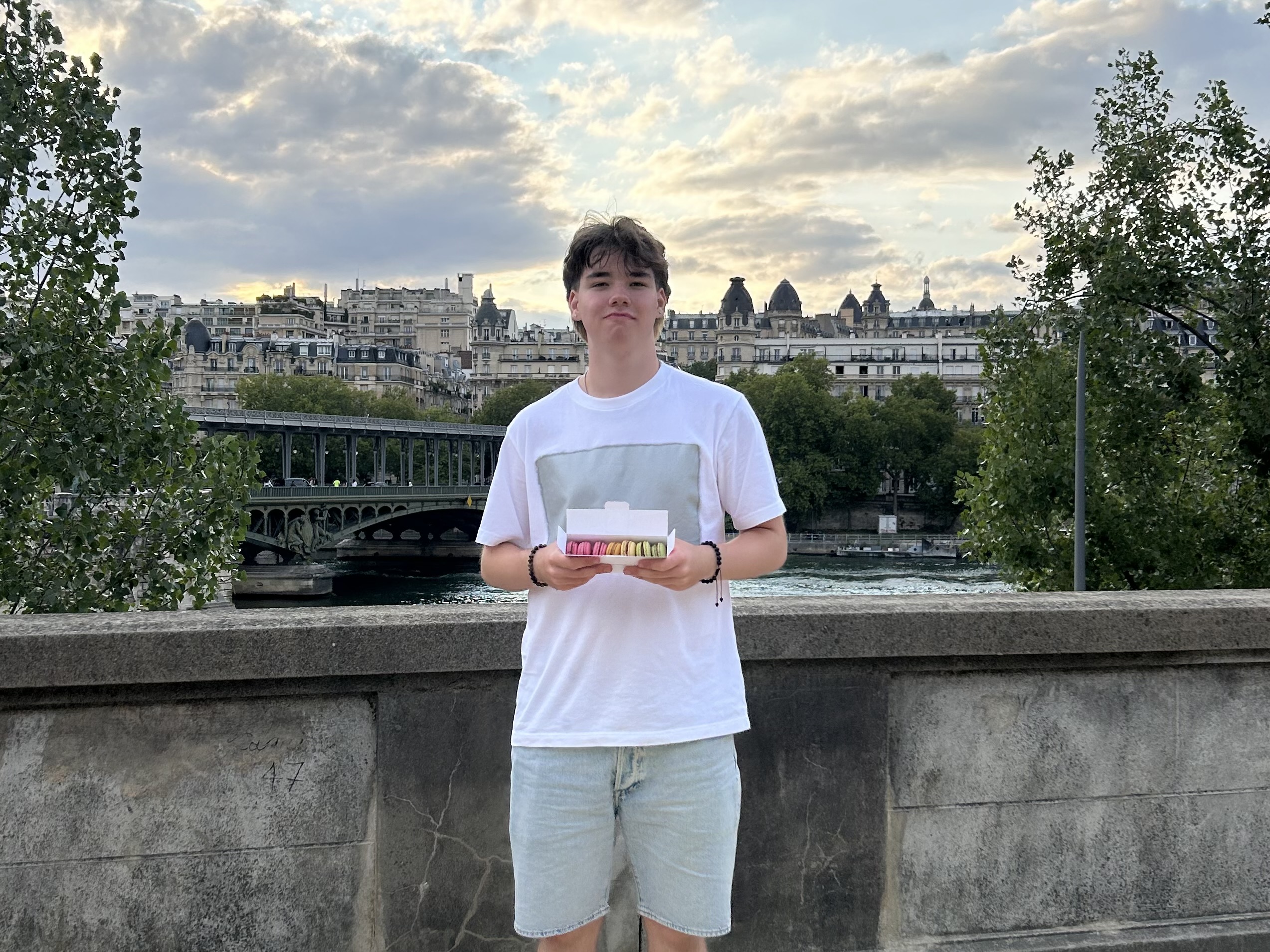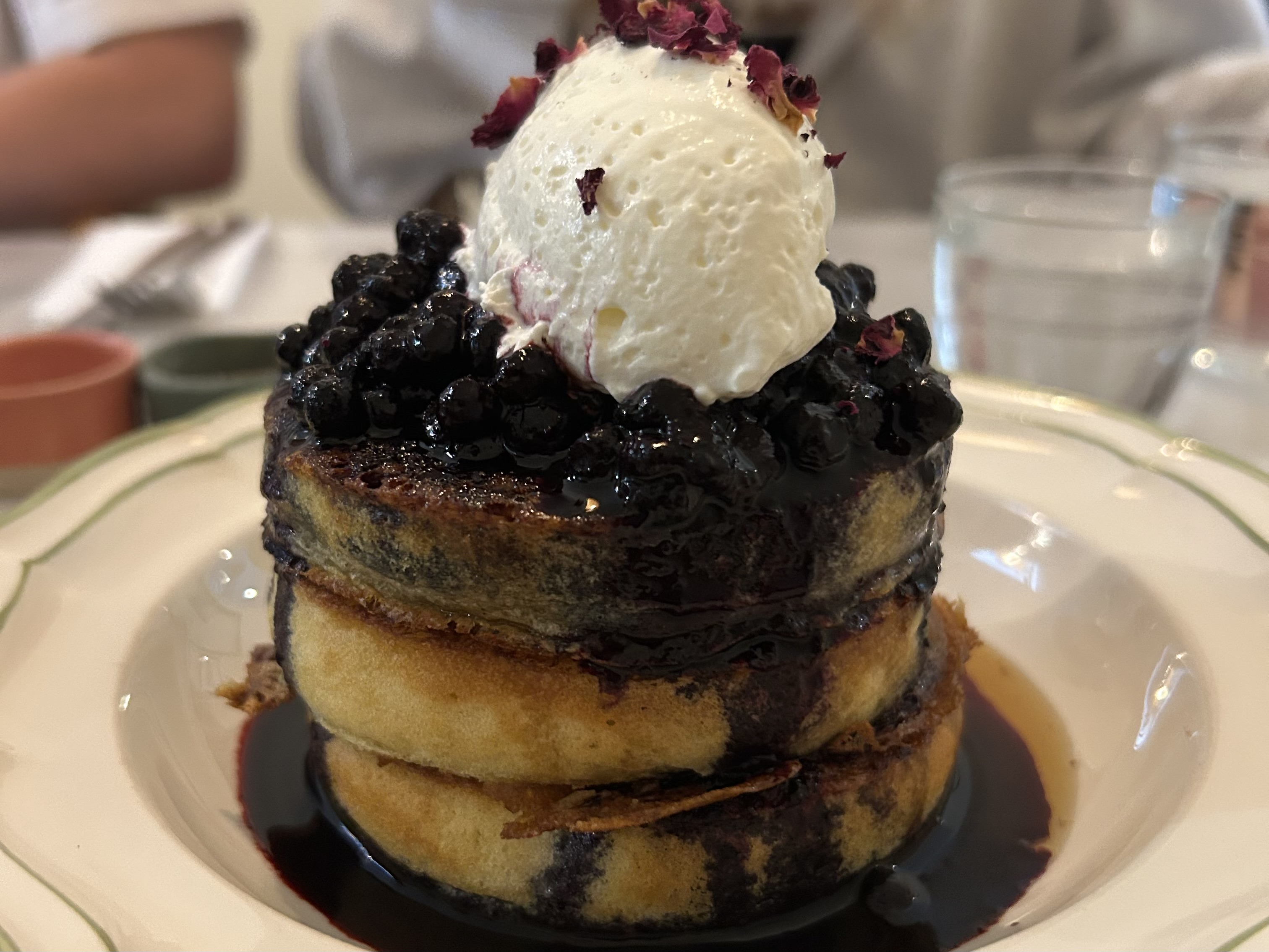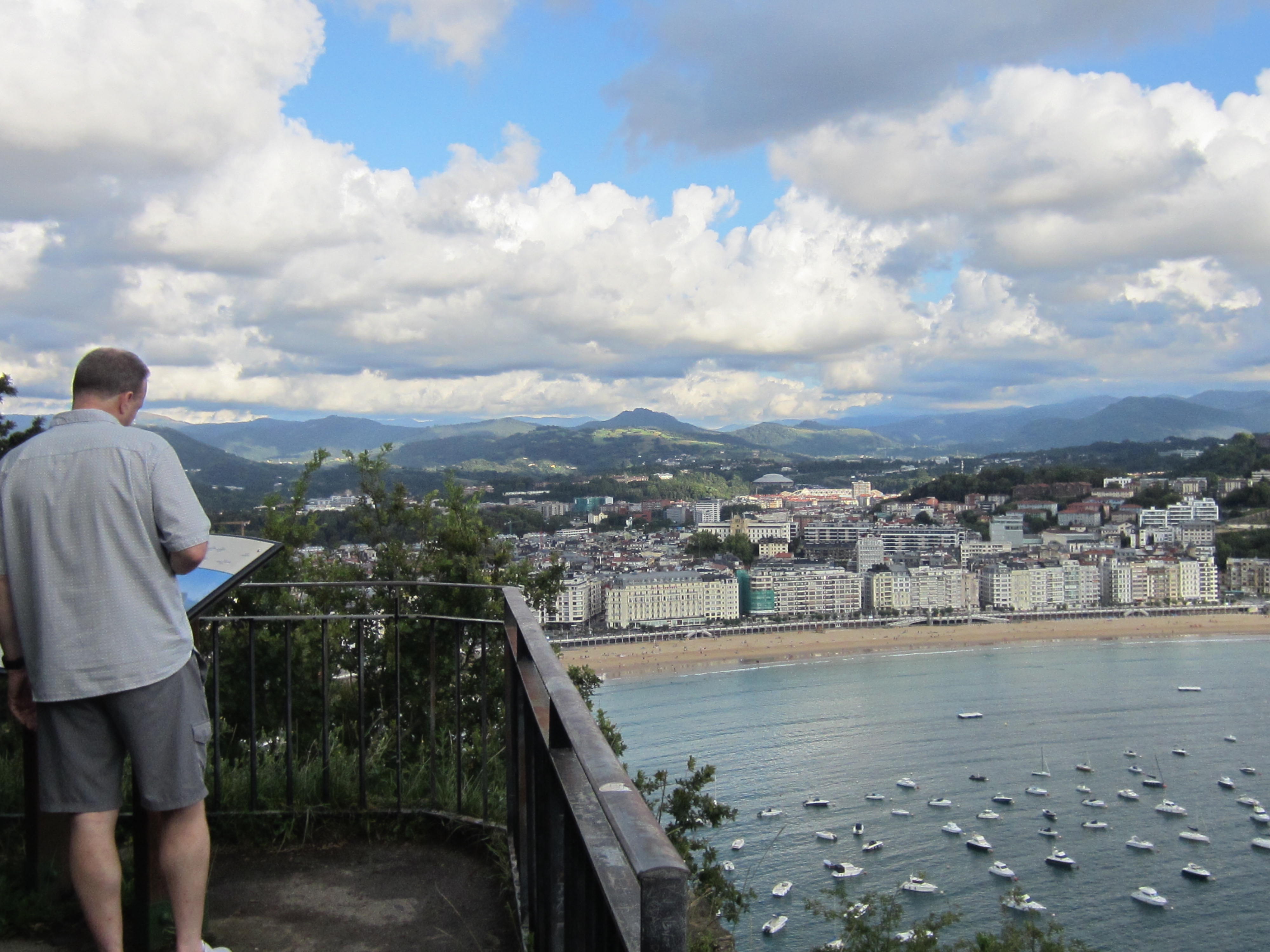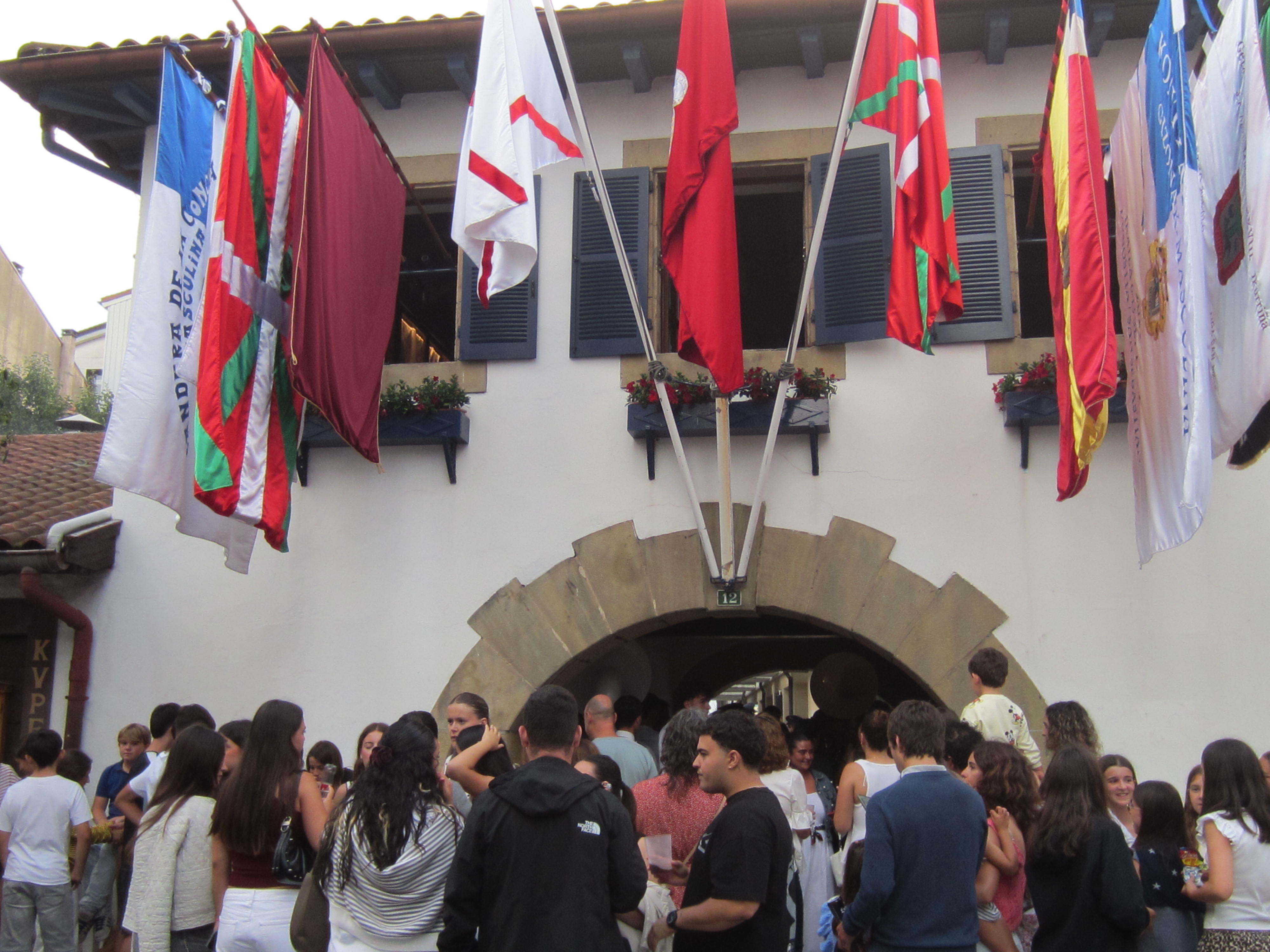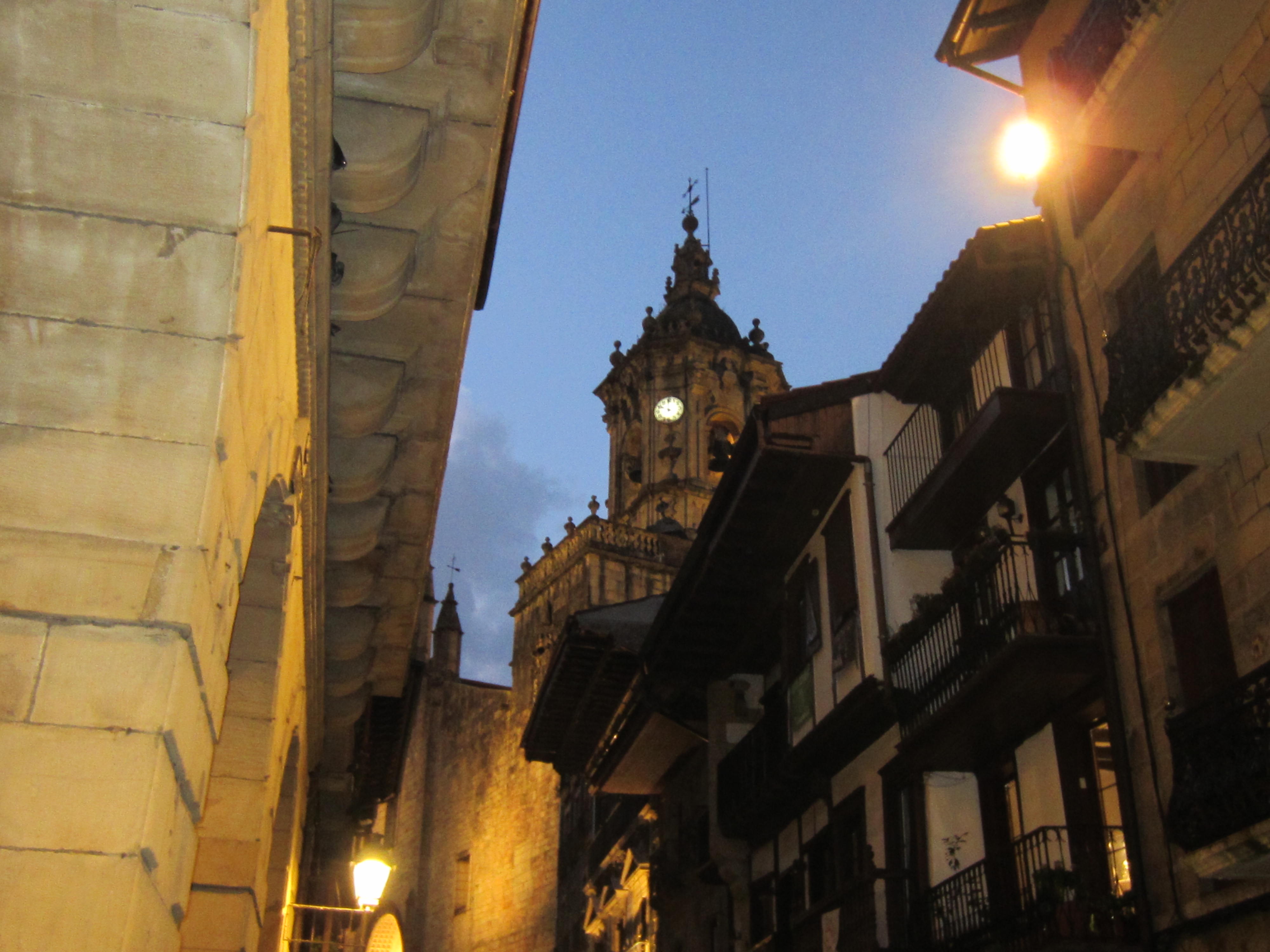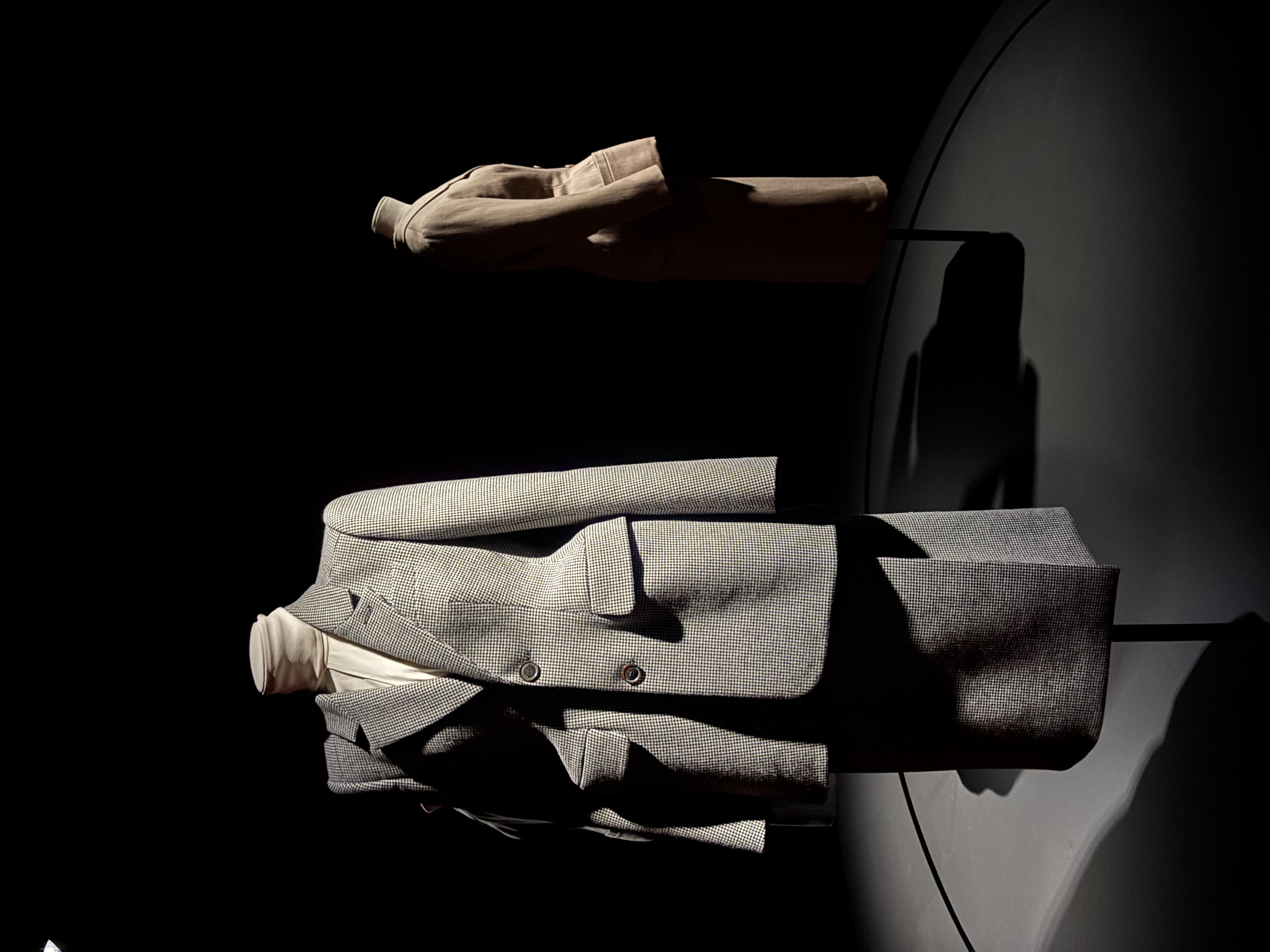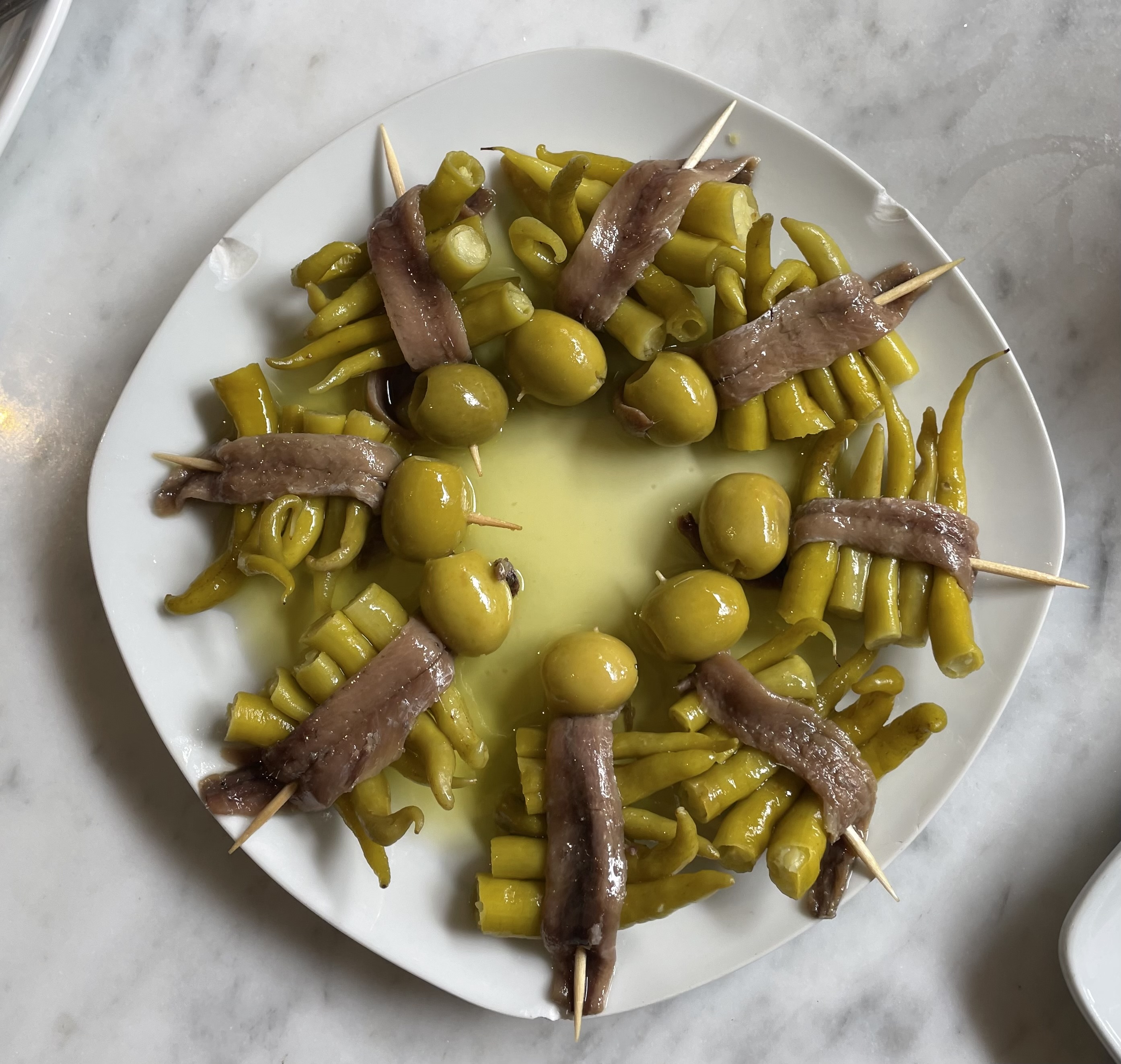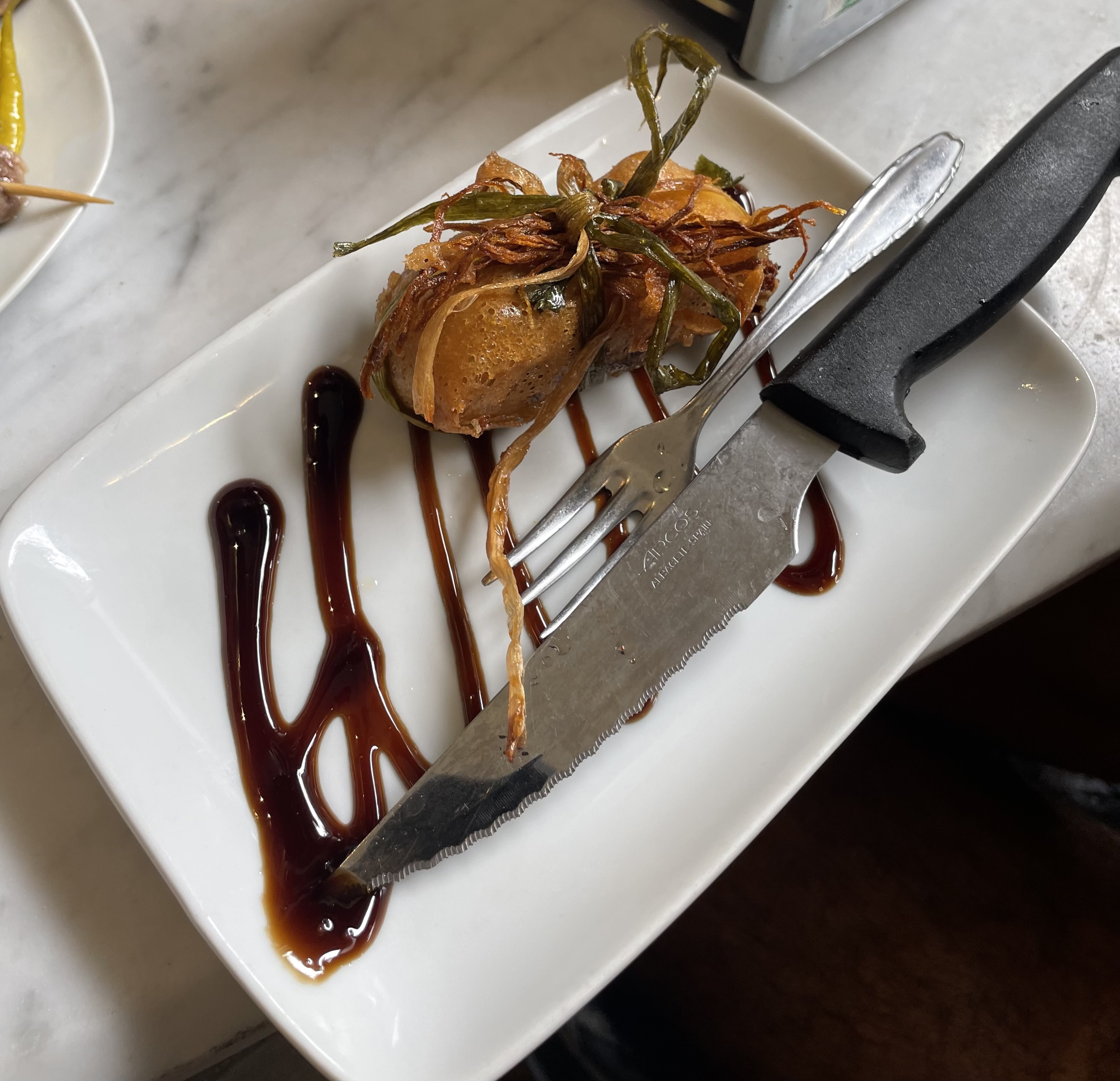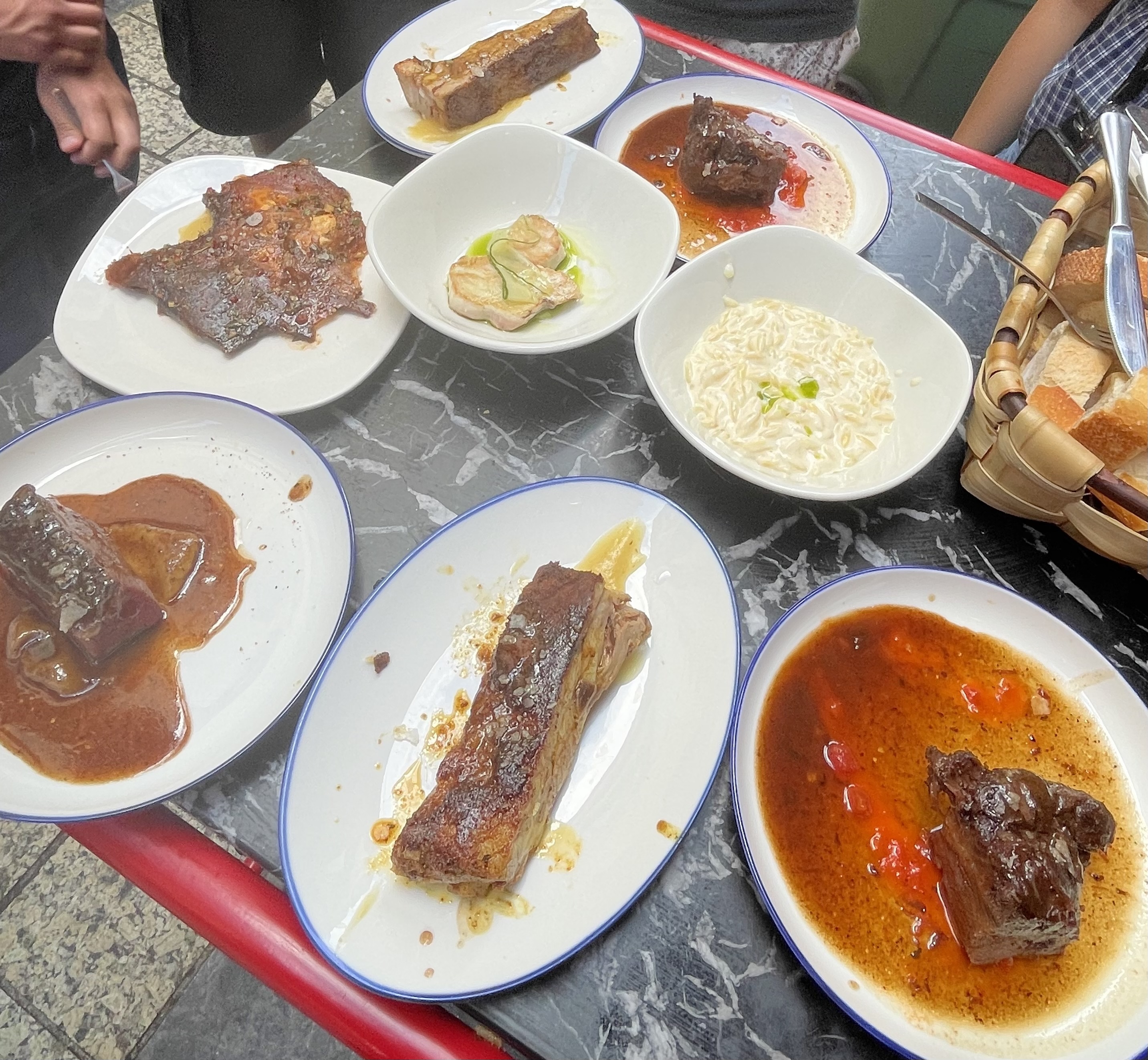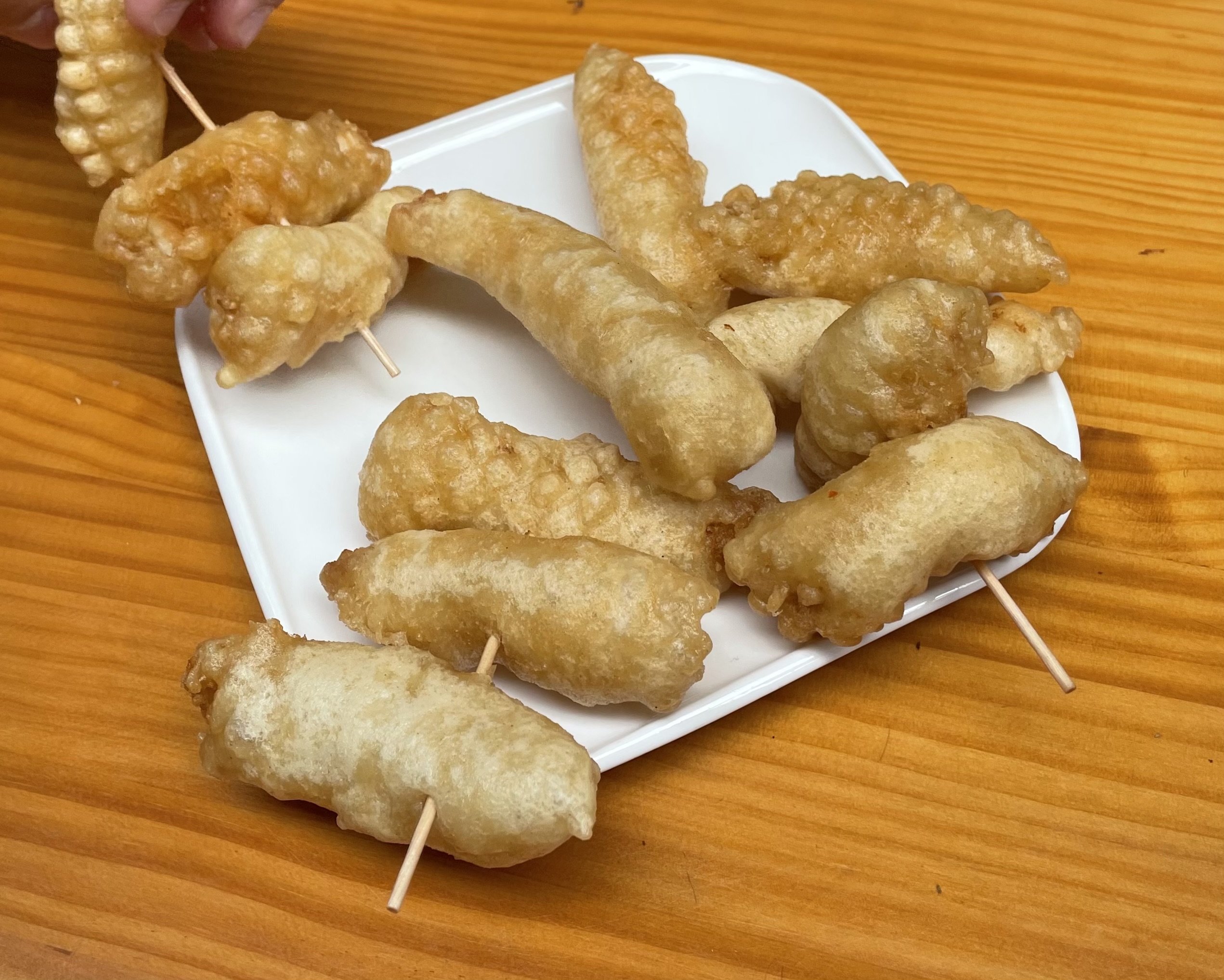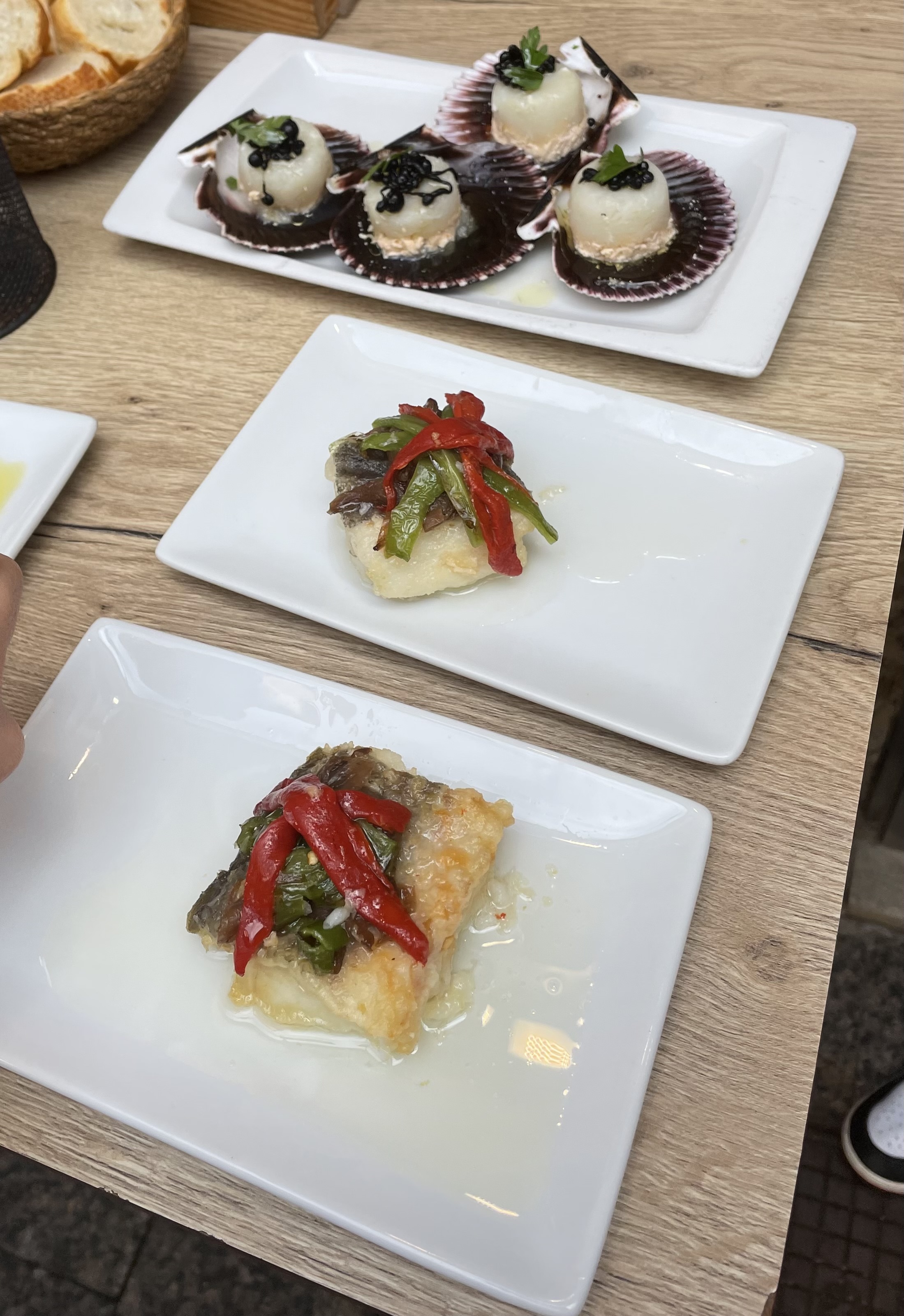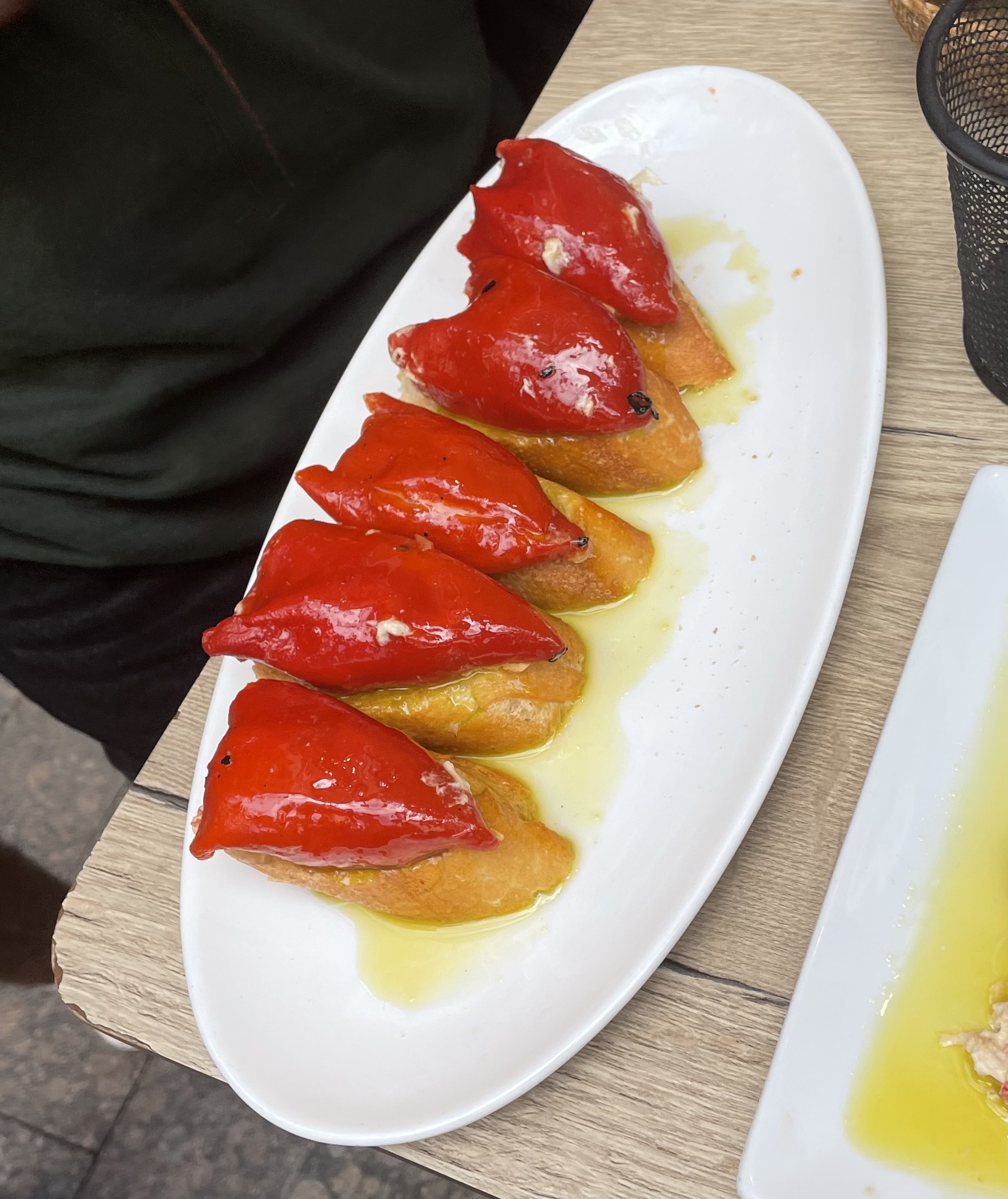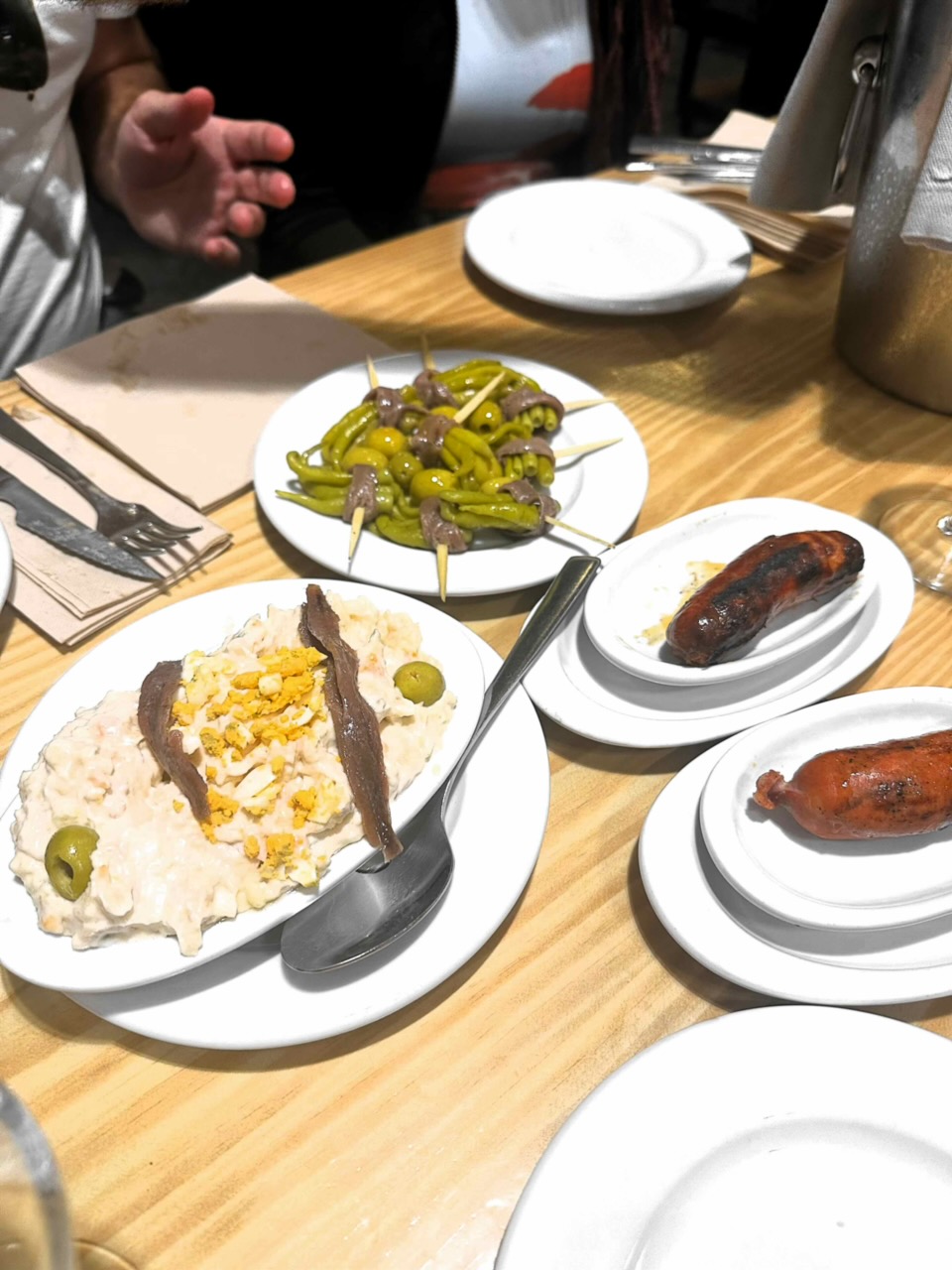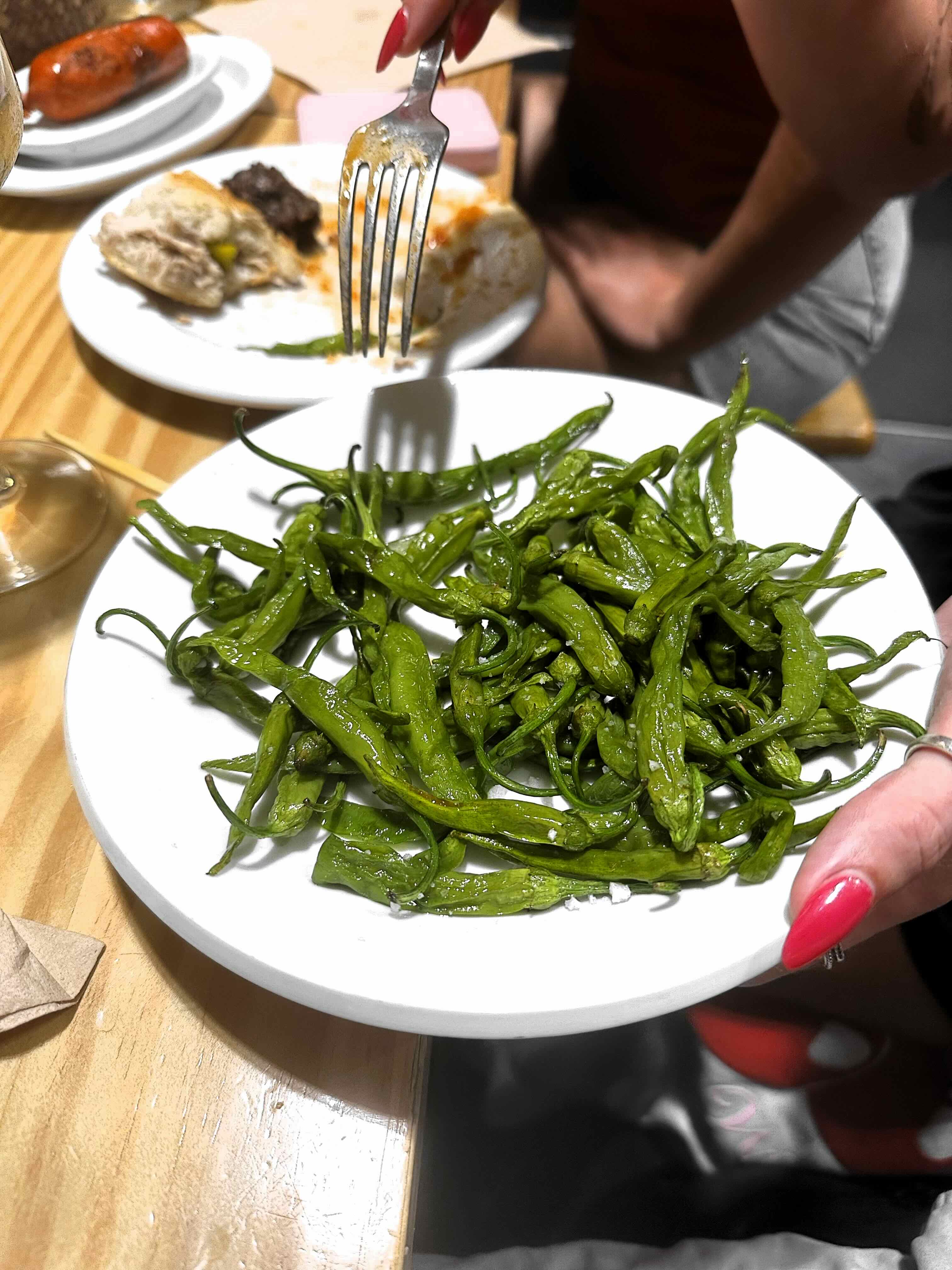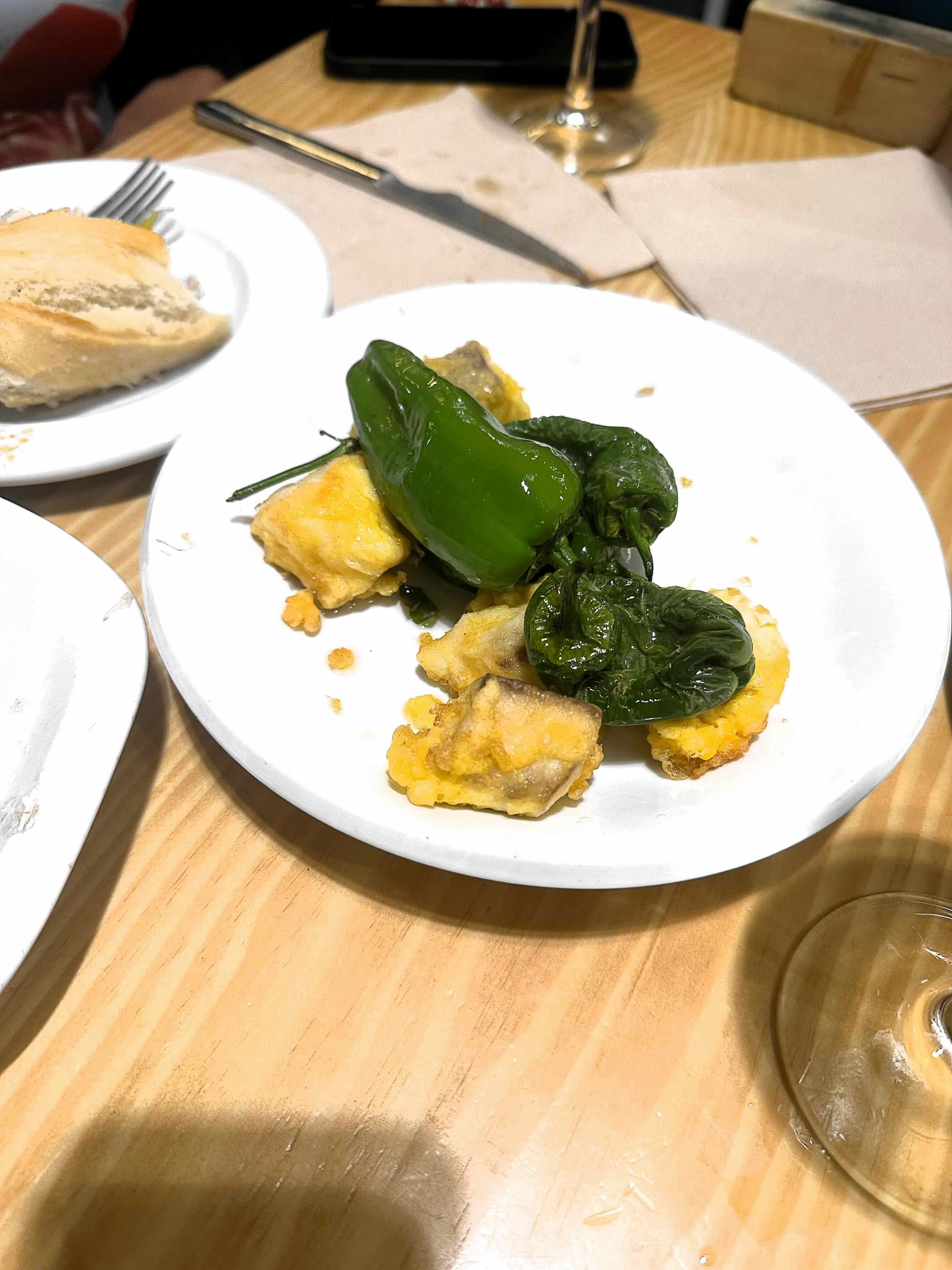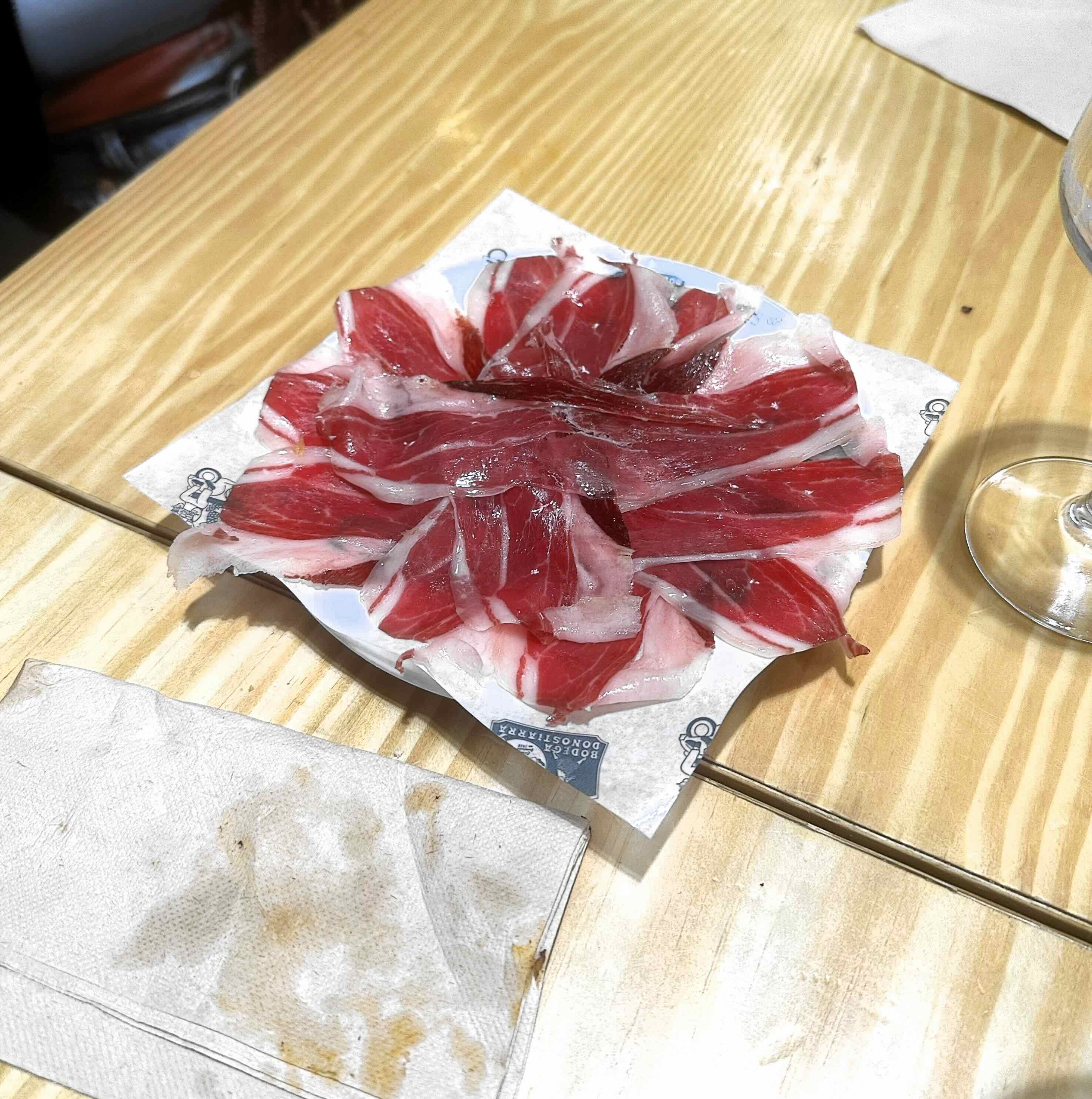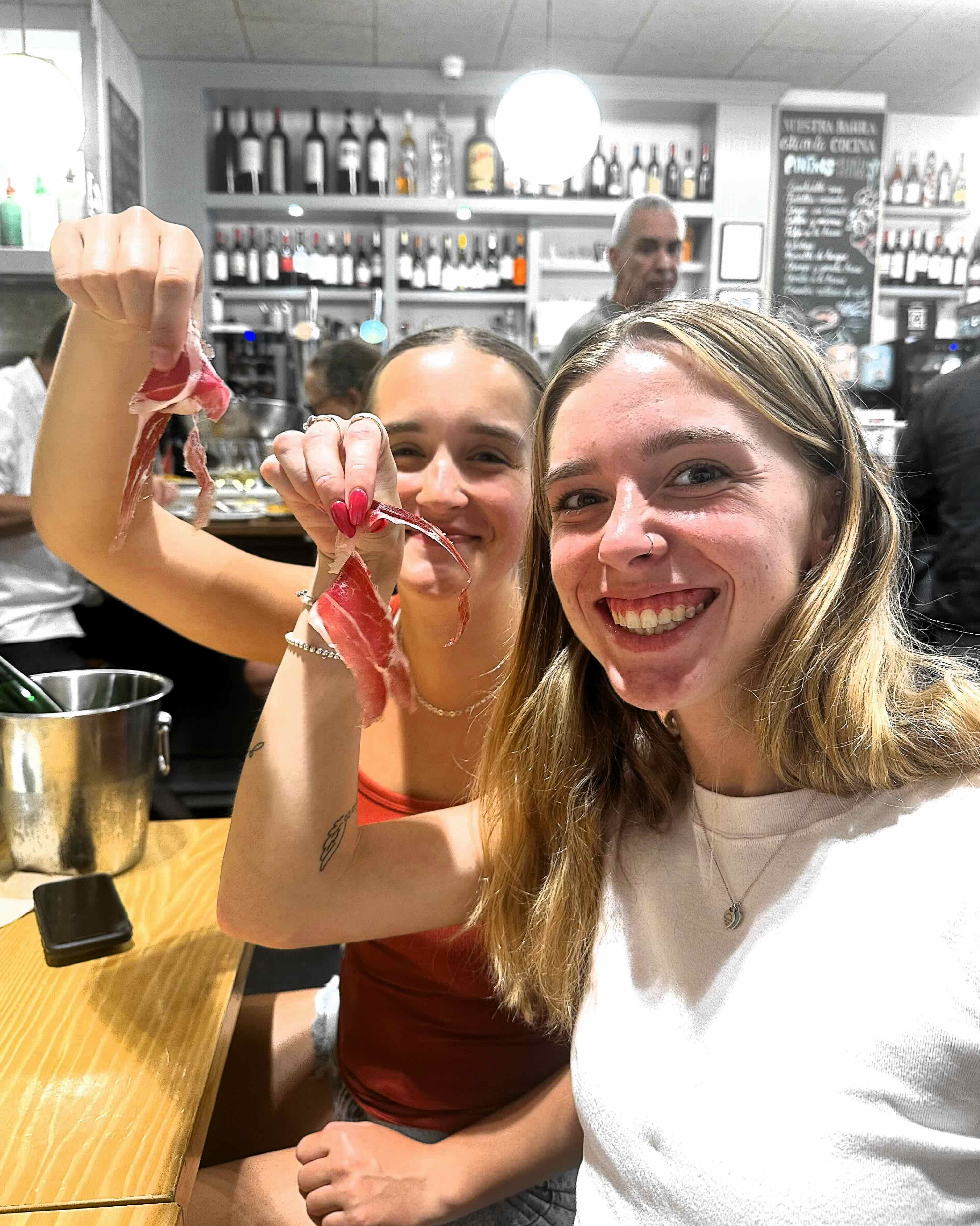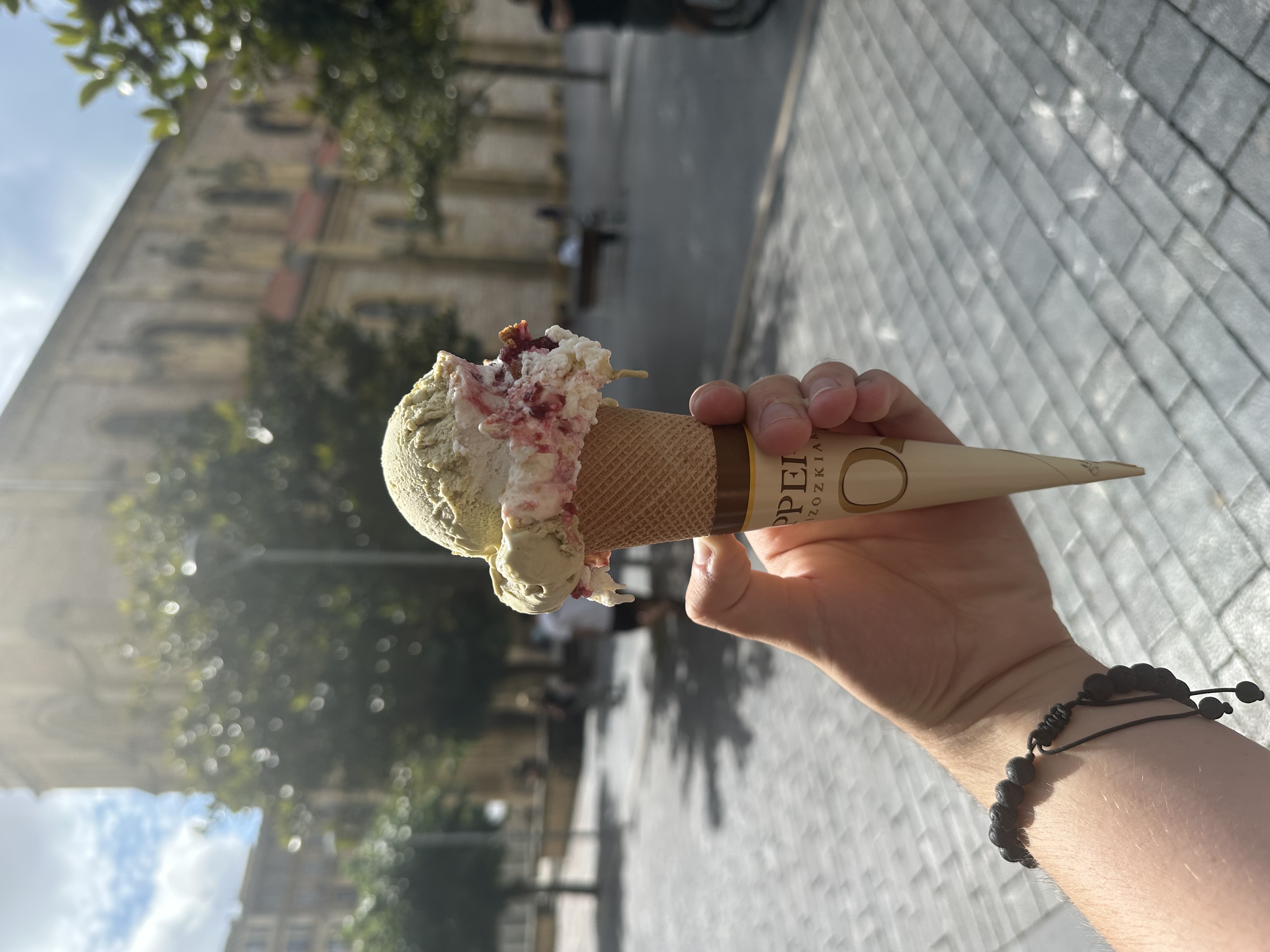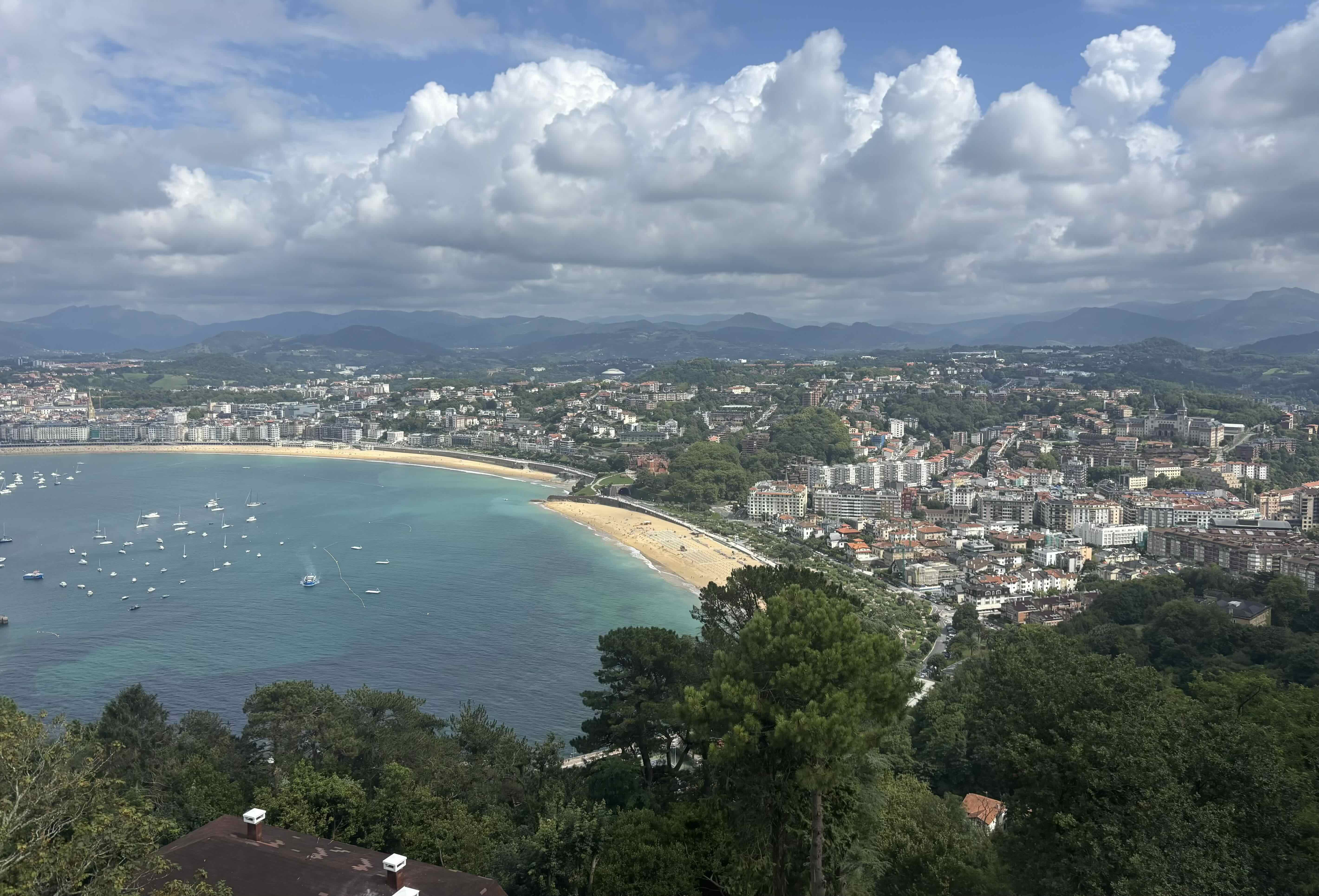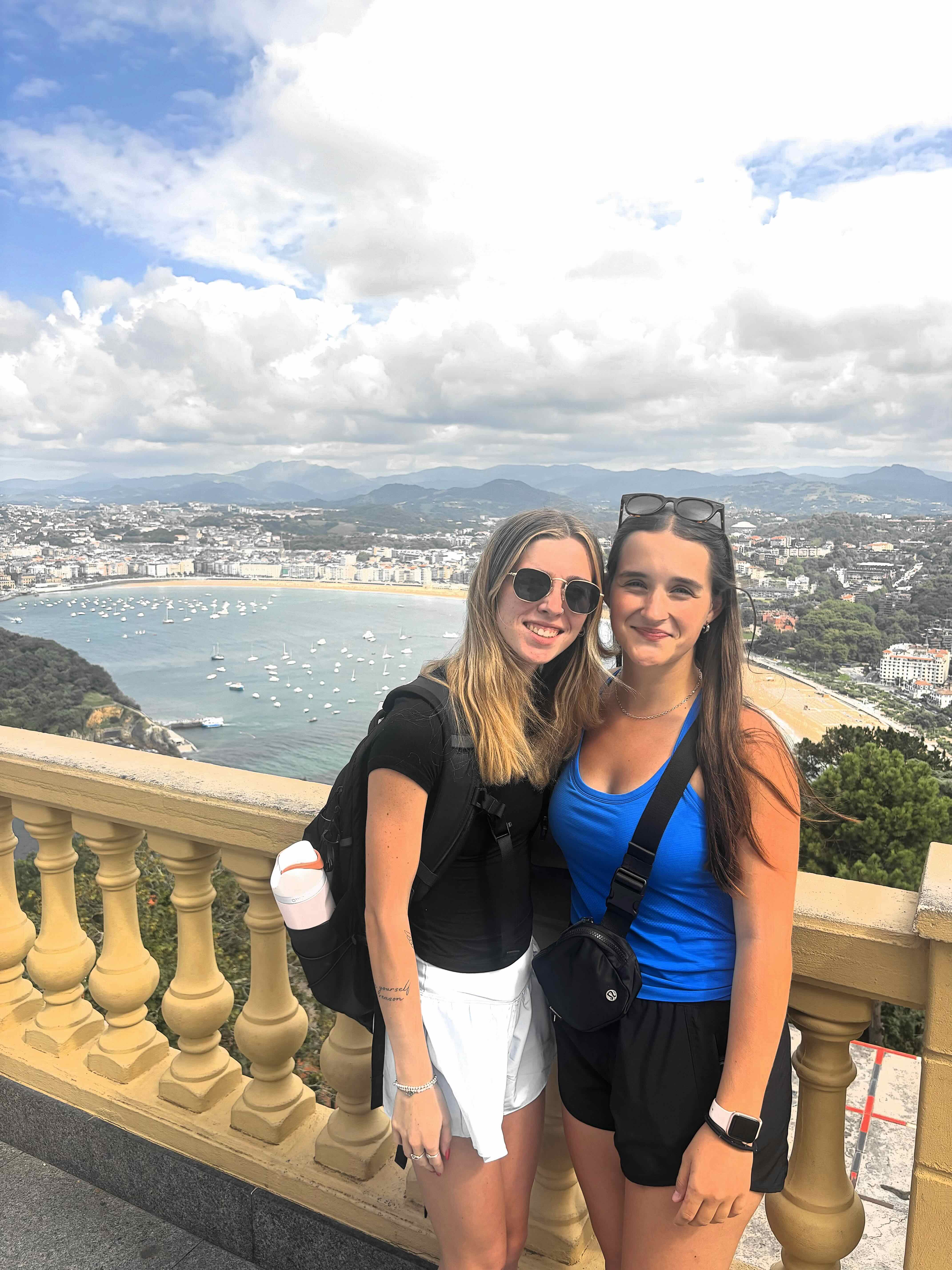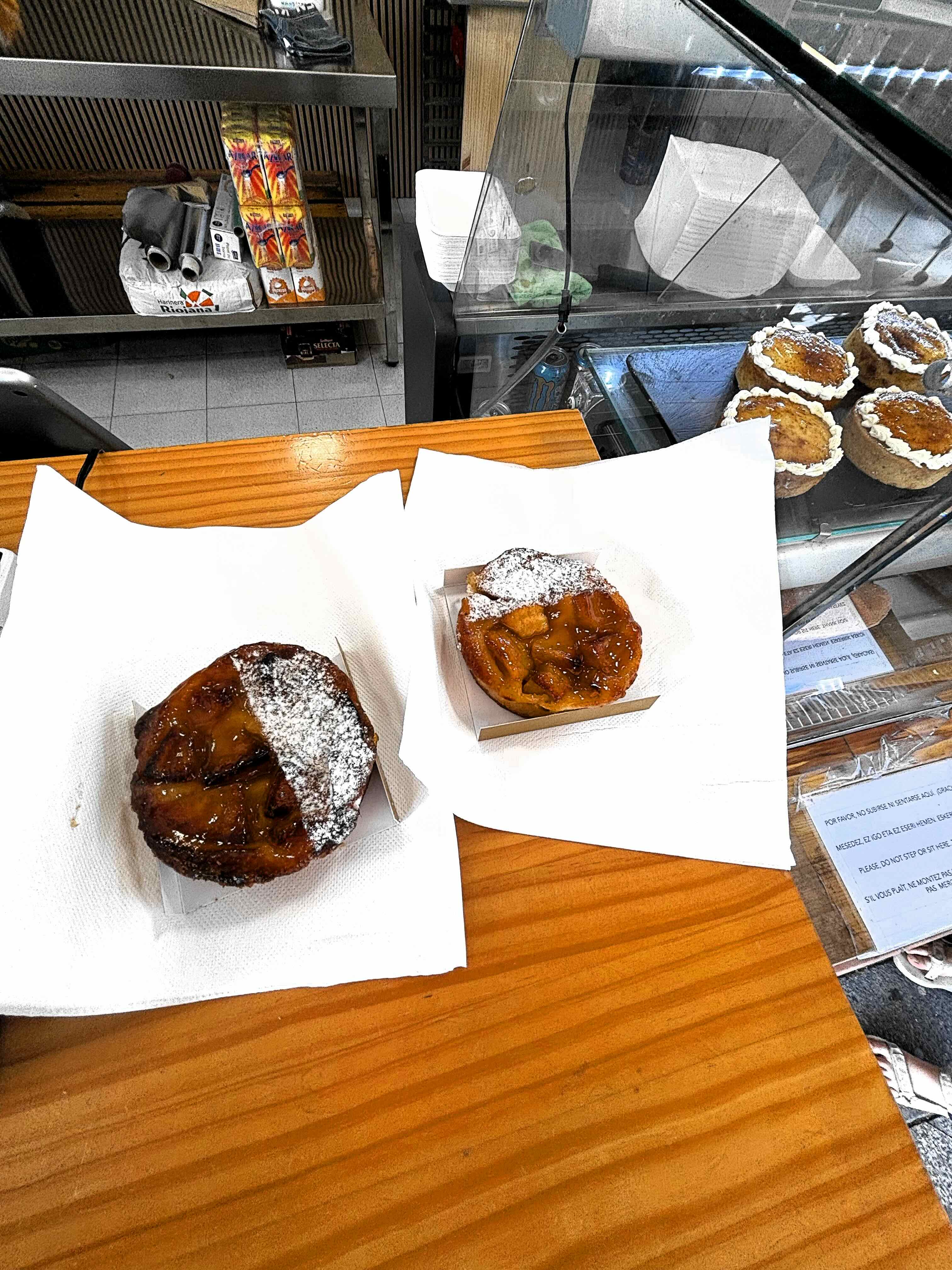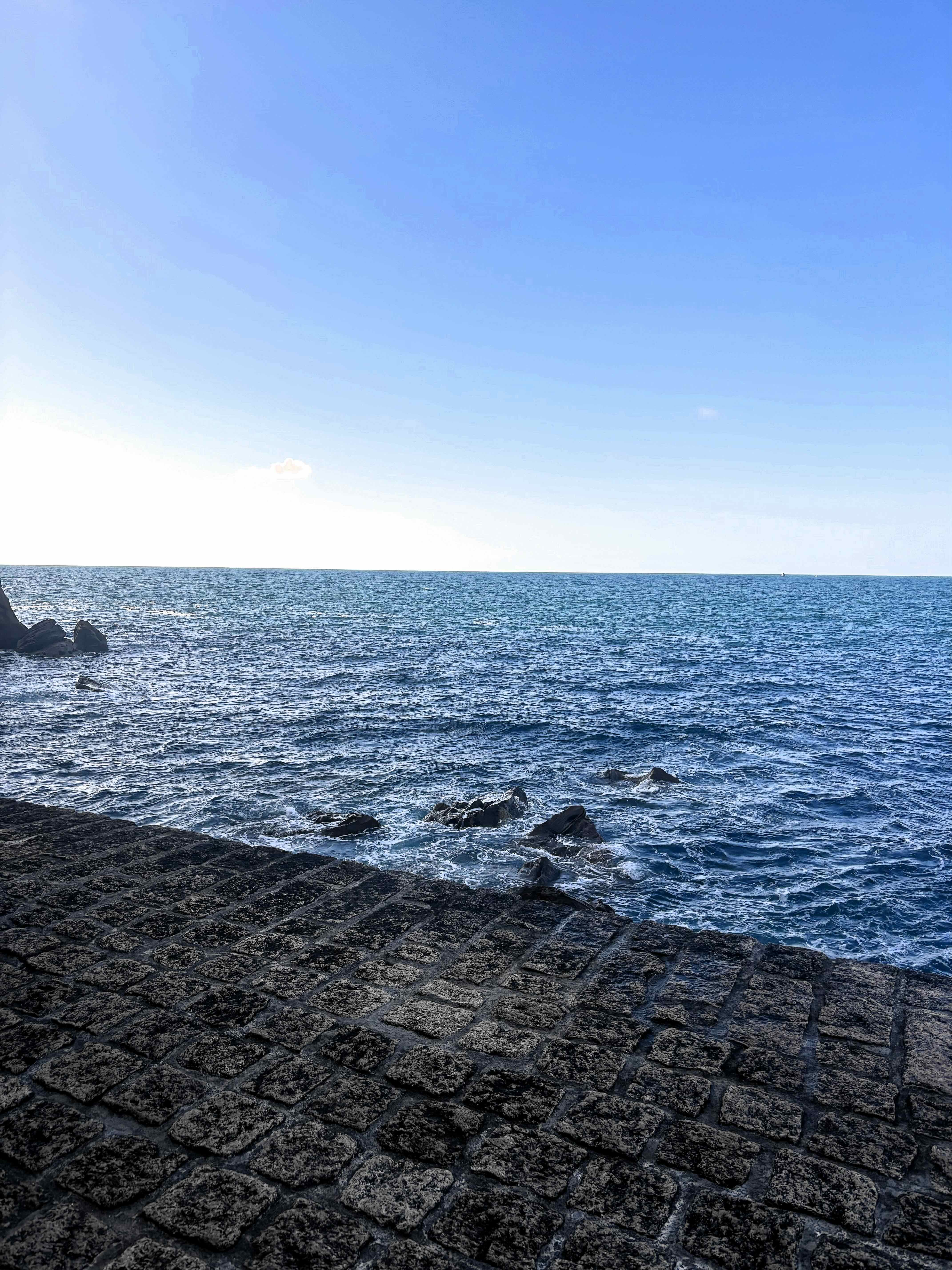My final day in San Sebastián was both reflective and bittersweet. The three weeks I had spent there had flown by, and it was hard to believe I was already saying goodbye to the city and the country of Spain. Throughout the day, I found myself looking back on my experiences and feeling eager to bring home the new knowledge and perspective I had gained.
After our last class at Lacunzá, the Spanish school where we had been studying, our group gathered on Zurriola Beach for a picnic. Professor Zabalbeascoa brought delicious Basque food from Adamo Beach Bar, including my favorite, the Spanish potato tortilla. As we ate, we chatted about our experiences over the course of the trip, any other destinations we had visited, and the memories we would carry with us long after we left. I am glad we were able to come together to share our adventures to formally finish our time here in this beautiful city. While it’s difficult to sum up my time on this trip in words, I would describe it as both refreshing and eye-opening. It provided a much-needed break from life back home while also teaching me a great deal about the world and myself.
After the picnic, I biked to La Concha, San Sebastián’s most popular beach, without needing my phone for directions. After three weeks in a place that had initially swallowed me whole, I felt like I knew the city like the back of my hand. I could navigate from one end to the other and felt the city was just the right size. La Concha was packed by the time I arrived, as it usually is in the afternoon. As I lay in the sun, a sense of relaxation washed over me. There were no more activities to rush through, and I could spend the rest of the day living like an unbothered local. Of course, that started with the classic Spanish siesta that I took as soon as I got back to the residence. This daily afternoon nap-time reflects the calm and relaxed lifestyles of the Basque people, juxtaposing the hectic pace of life at home. Throughout the course of my time in San Sebastián, I constantly found myself comparing culture and lifestyle in Spain to that of the US, allowing me to understand the world on a global level, instead of just from an American perspective. Such a realization again came when playing a game of pickup basketball before dinner with some locals. As I continued to notice their teamwork-based play style, unlike my relatively iso-focused style, I could see how it paralleled the differing cultural and societal beliefs held by each country, Spain being much more community-centered and the United States more individualistic. These realizations and comparisons stood out to me because of how rich the Basque region is in its own culture. In a sense, it has not been westernized like some of the other parts of the world. Sure, San Sebastián is a relatively contemporary city, but its modernity does not overshadow its Basque identity.
After doing laundry and packing, I still needed dinner, so I decided to go to the nearest pizza place in front of the residence. Ironically, it was called “American Pizza Lovers,” and I felt like the perfect judge to critique how authentically American it really was. I ended up finishing the entire medium pizza and left wishing this place could replace many of the pizza joints back home. From the beginning of the trip, it was obvious how high the bar was for food in San Sebastian, and it stayed that way every time I went out to eat. You could really taste the freshness in the ingredients, a rare occurrence in the US. After dinner, I decided to take a late-night walk on the beach to conclude my experience in the city. Watching the waves splash over my feet under the full moon, which cast an almost magical glow over the city, I found myself entranced by the scenery.


With few people around, I was able to relax, listen to the sounds of the ocean, and reflect on my experiences from the past three weeks. When I realized I should get to bed because of our early morning bus, I found myself longing for more time on the cool sand. As I biked through the city for the last time, I soaked in every sight, sound, and scent. In these last few moments, it became clear to me that I would have to return to San Sebastián someday in the future.

